Rome is a city steeped in history and bursting with life. With ancient ruins and imperial pomp, I think it’s an adventure like no other European city.
As a travel blogger, I’ve wandered through countless cities. But Rome, with its timeless allure, always calls for a return.
I recently spent 10 days there on my 7th visit. As the Romans say, “non basta una vita” – a lifetime is not enough.
This 4 days in Rome itinerary is designed to help you experience the best of the Eternal City. You’ll see the main sites and some delightful hidden gems.
In four days, you’ll delve into ancient history, marvel at architectural wonders, gawk at masterpieces in museums, and indulge in culinary delights that are quintessentially Roman.
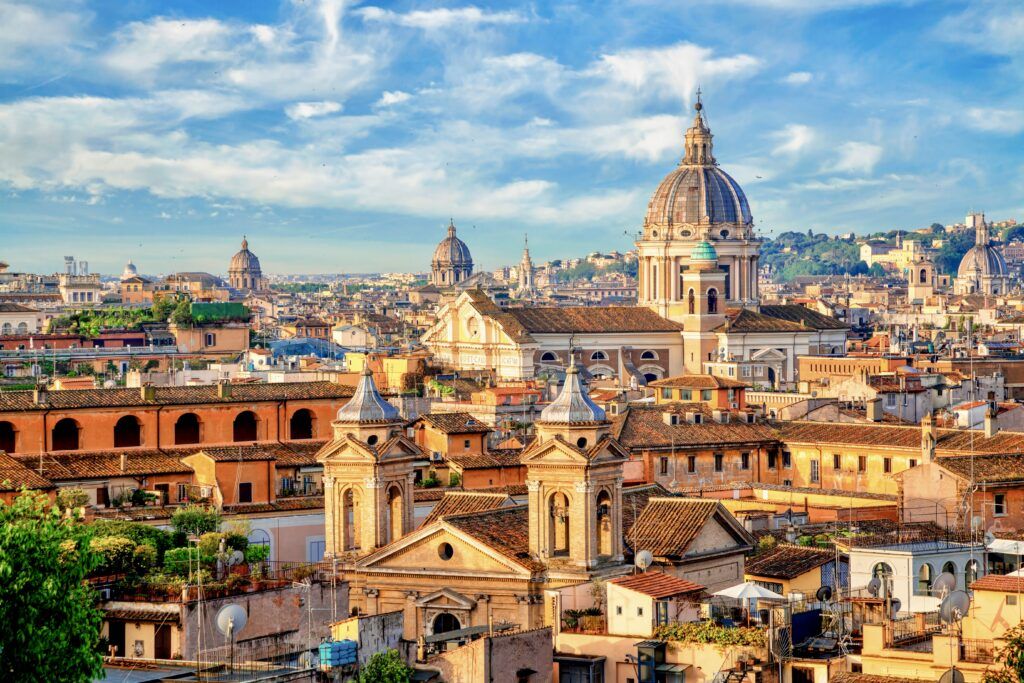
Snapshot Of 4 Days In Rome
Here’s a quick glance at what you will see with this Rome itinerary:
Day 1: Historic Center: Campo de’ Fiori, Piazza Navona, Church of St. Louis of the French, Palazzo Altemps, Pantheon, Santa Maria Sopra Minerva, Basilica of St. Ignatius, Doria Pamphilj, Trevi Fountain, Piazza Espagna, Piazza del Popolo, Borghese Gallery
Day 2: Imperial Ruins: Palazzo Valentini, Trajan’s Market, Via Imperiali dei Fori, Colosseum, Roman Forum & Palatine Hill, Trastevere
Day 3: Monti: Vittoriano, Capitoline Museums, Domus Aurea, Via Urbana, St. Peter in Chains, Santa Maria Maggiore, Santa Prassede, Palazzo Massimo, Diocletian’s Baths
Day 4: Vatican & Hidden Gems: Vatican Museums, St. Peter’s Basilica, Castle Sant’Angelo, Basilica of San Clemente, Casa Romane del Cielo, Santo Stefano Rotondo, Basilica of St. John Lateran, Holy Stairs & Sancta Sanctorum
Pro Tip: Fior this many attractions, you may want to invest in the Roma Pass, which also includes public transport.
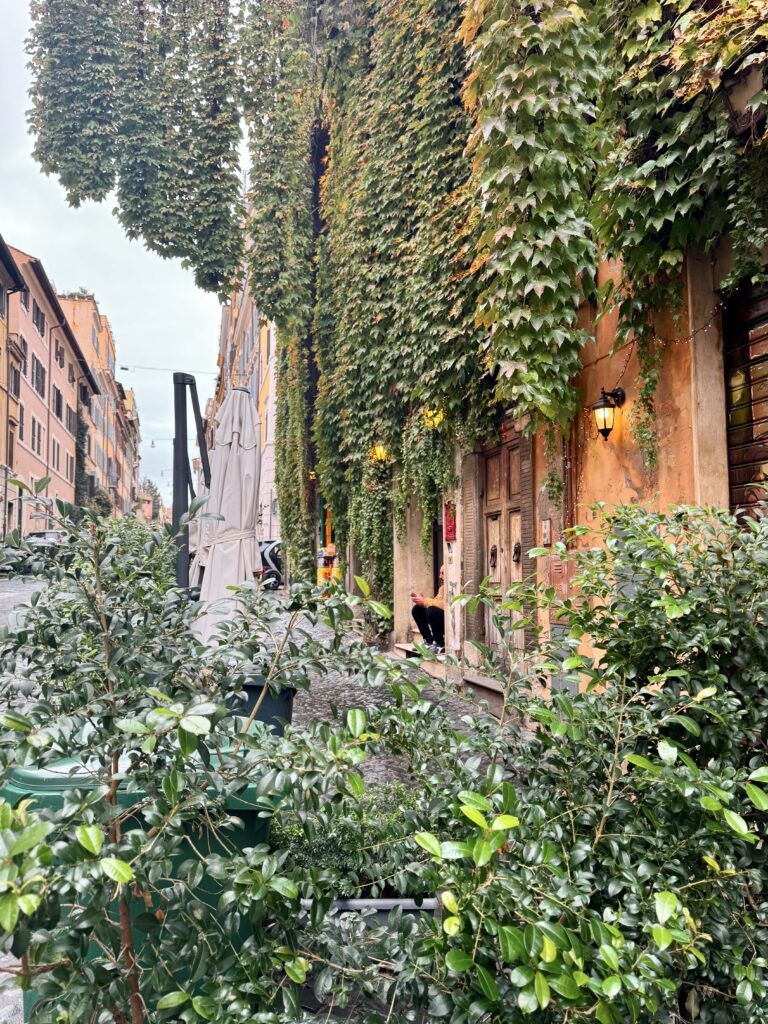
To pull off this 4 day itinerary, you’ll need to pre-book skip the line tickets and possibly some tours. The last thing you want to do in Rome is stand in line for hours!
Tickets you’ll need include:
- Borghese Gallery ticket
- timed entry Colosseum ticket
- ticket for the Roman Forum and Palatine Hill
- Vatican ticket
- Capitoline Museums ticket
- St. Peter’s dome ticket
Whether you’re new to Rome or just aiming to see as much as possible, booking a few guided tours can be incredibly beneficial. Tours are a great way to guarantee you won’t miss any of the city’s highlights.
They’re particularly useful for navigating the large and complex imperial sites, as well as the Vatican. Here’s some to check out:
- tour of Colosseum, Forum, and Palatine Hill
- private imperial ruins tour with PhD
- Vatican Museums tour
- private Vatican tour
- Trastevere food tour
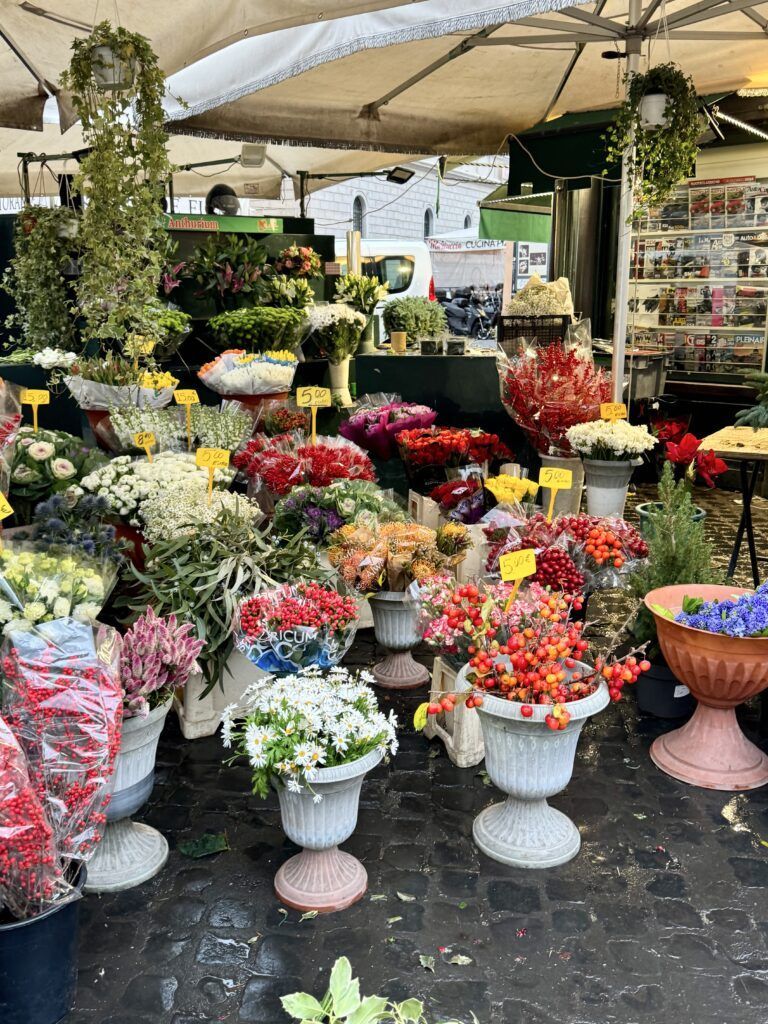
4 Days In Rome Itinerary
I like to start off a visit to Rome with a walk through the heart of the city, the centro storico. This colorful neighborhood has cobbled lanes, fanciful fountains, iconic monuments, and some of Europe’s best people watching.
None of the attractions are far apart, and none require much time. So, you can wander from site to site popping in and out as you please.
Campo de’ Fiori
Kick off your stroll through the historic center by visiting one of Rome’s most colorful spots, Campo de’ Fiori. The piazza is Rome’s “living room.”
In the morning, this bohemian piazza hosts a fruit and veggie market. At night, people pile into cafes and it can get a bit raucous.
Lording over the square is a statue of Giordano Bruno, an intellectual heretic who was burned on this spot in 1600.
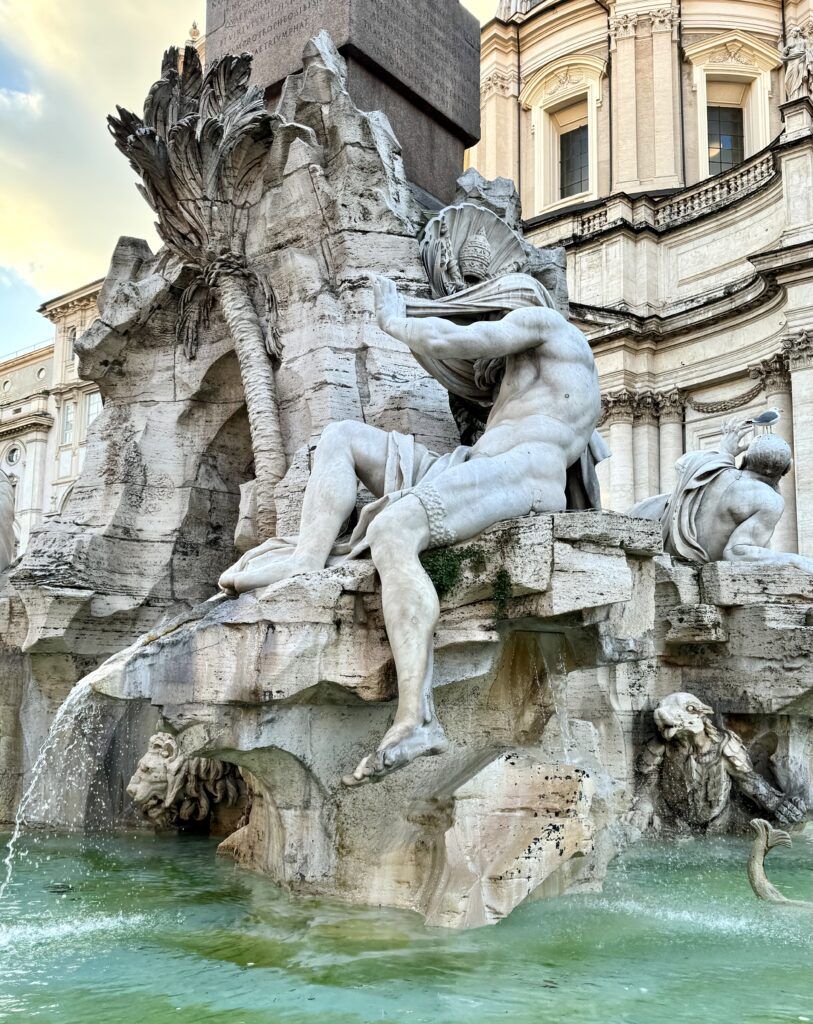
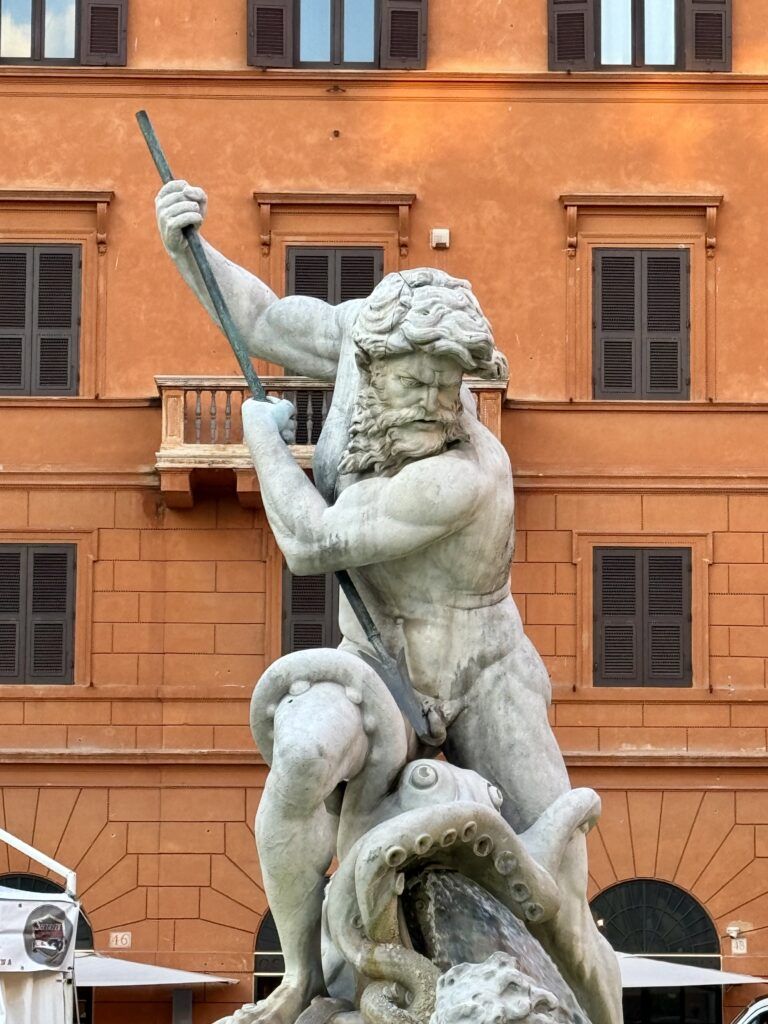
Piazza Navona
Then, move on to Piazza Navona, one of the world’s most beautiful squares. The square lies with the contours of an ancient Roman stadium.
It’s filled with elaborate fountains by Bernini and Giacomo della Porta and the jewel-like Church of Sant Agnese.
Church of St. Louis of the French
This church has a Renaissance facade by Giacomo della Porta. It’s dedicated to the the French King Louis IX.
You’ll find a profusion of marble. But the real reason to pop in is to see the Contarelli Chapel.
It has three exquisite paintings by Caravaggio dedicated to the life of St. Matthew. Put a coin in the machine to light them up.
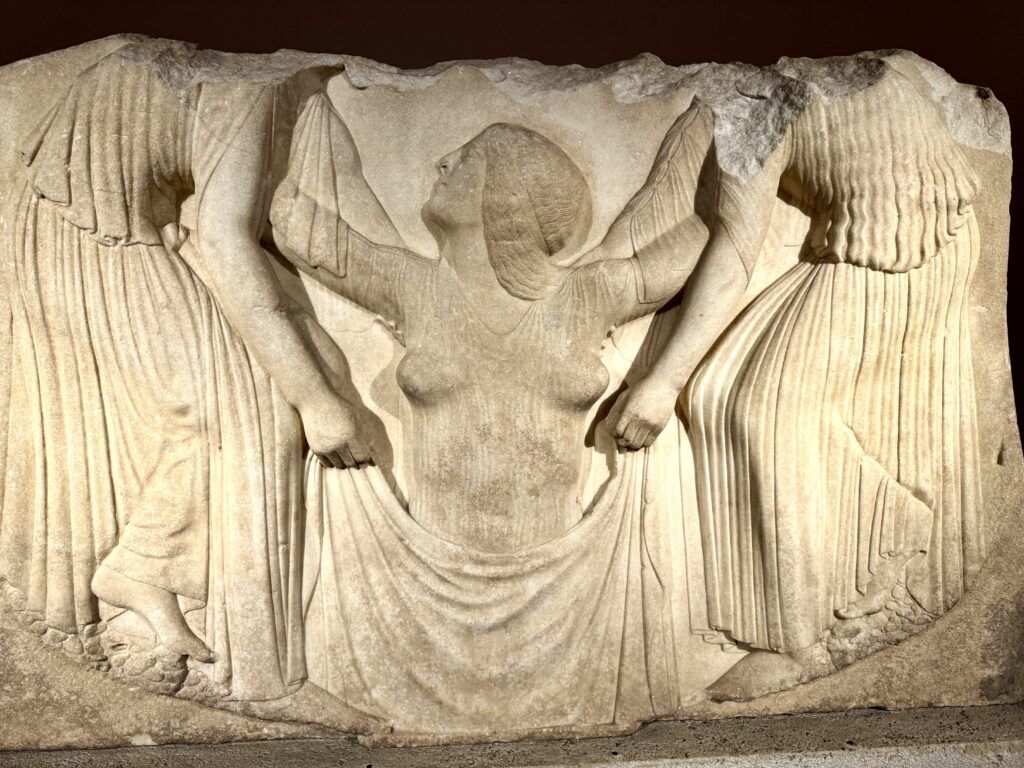
Palazzo Altemps
Just a stone’s throw from Piazza Navona is the must visit (and superbly restored) Palazzo Altemps. It’s a Renaissance treasure chest housing important collections of antique sculpture.
You’ll first wander into the fetching courtyard. There is a nymphaeum (mosaic wall fountain) and sculptures from the Altemps collection.
Inside, the museum boasts antique sculptures from major Roman collections. The star of the show is the Ludovisi collection, which includes the Ludovisi Throne, Ludovisi Sarcophagus, and the Ludovisi Gaul and Ares.
On the first floor, you’ll find a beautiful painted loggia. It’s home to the Ludovisi busts of the Caesars.
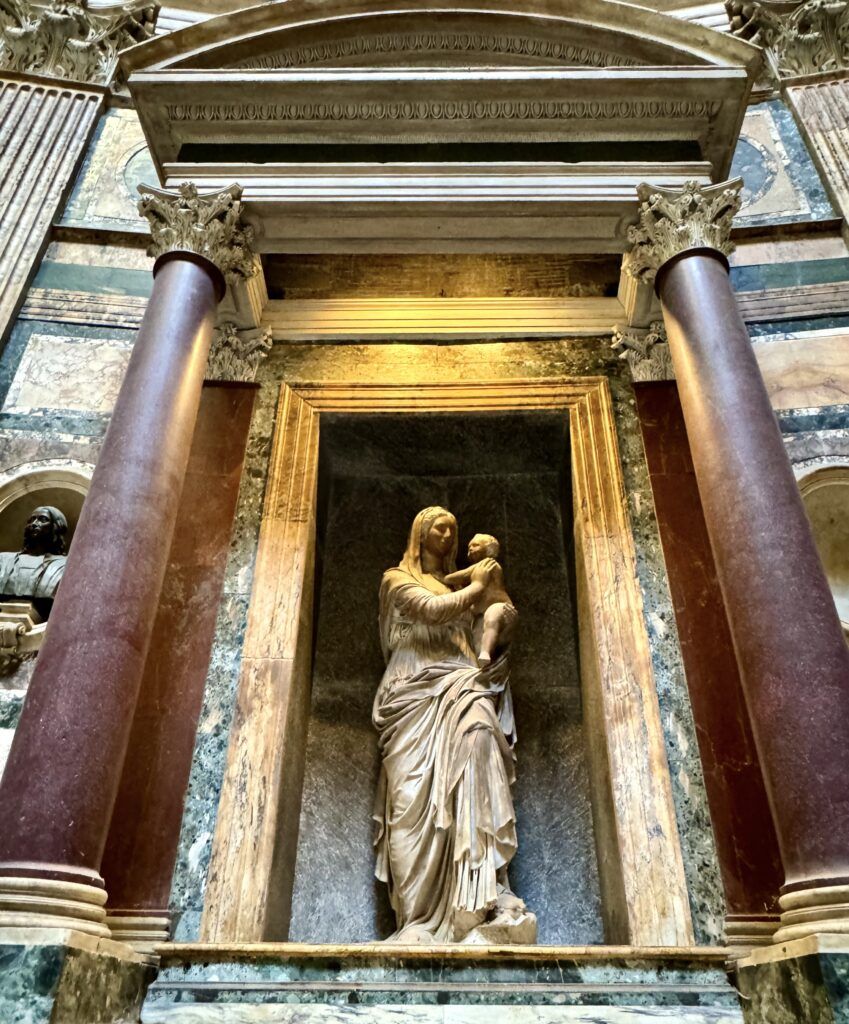
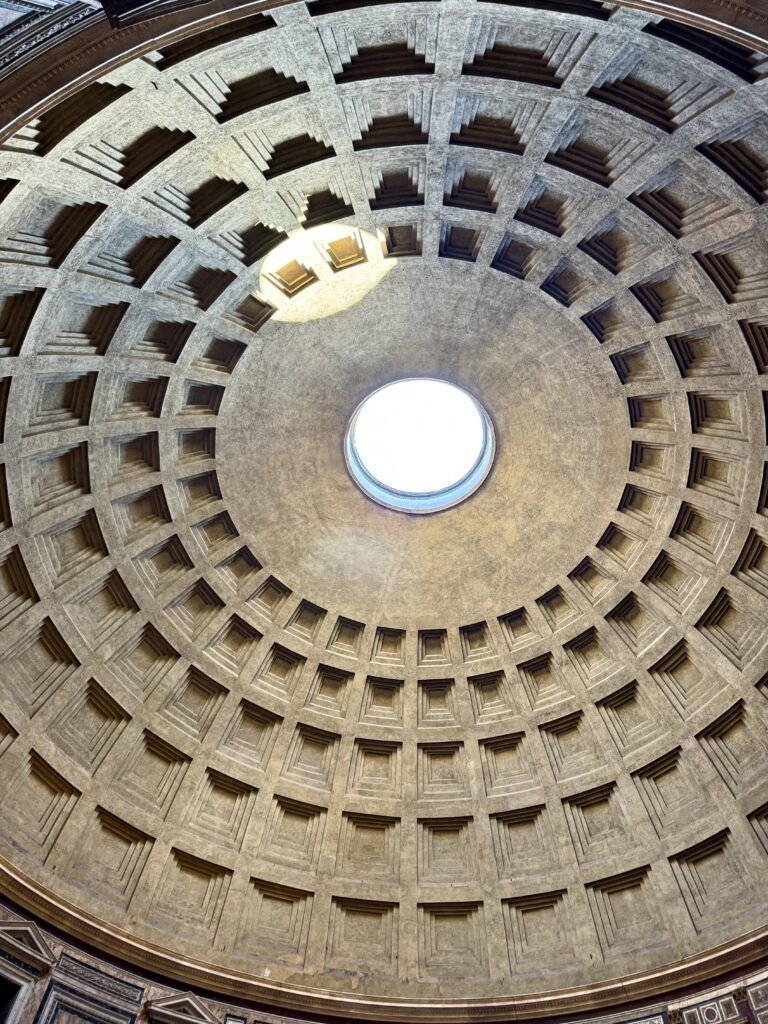
Pantheon
Originally a pagan temple and later a Christian church, the Pantheon is the perfect example of classical architectural harmony. Emperor Hadrian built it between 118 and 125.
The circular building features a massive dome, which became a prototype for other domes like St. Peter’s. The oculus, or opening at the top, is over 30 feet wide. When it rains, water streams in and it’s quite a sight.
There isn’t a lot of artwork inside. One exception is Lorenzetto’s Madonna of the Stone, which stands above Bernini’s tomb.
The lovely fountain outside was designed by Giacomo della Porta. An obelisk was placed in the center in 1711.
>>> Click here to pre-book a Pantheon ticket
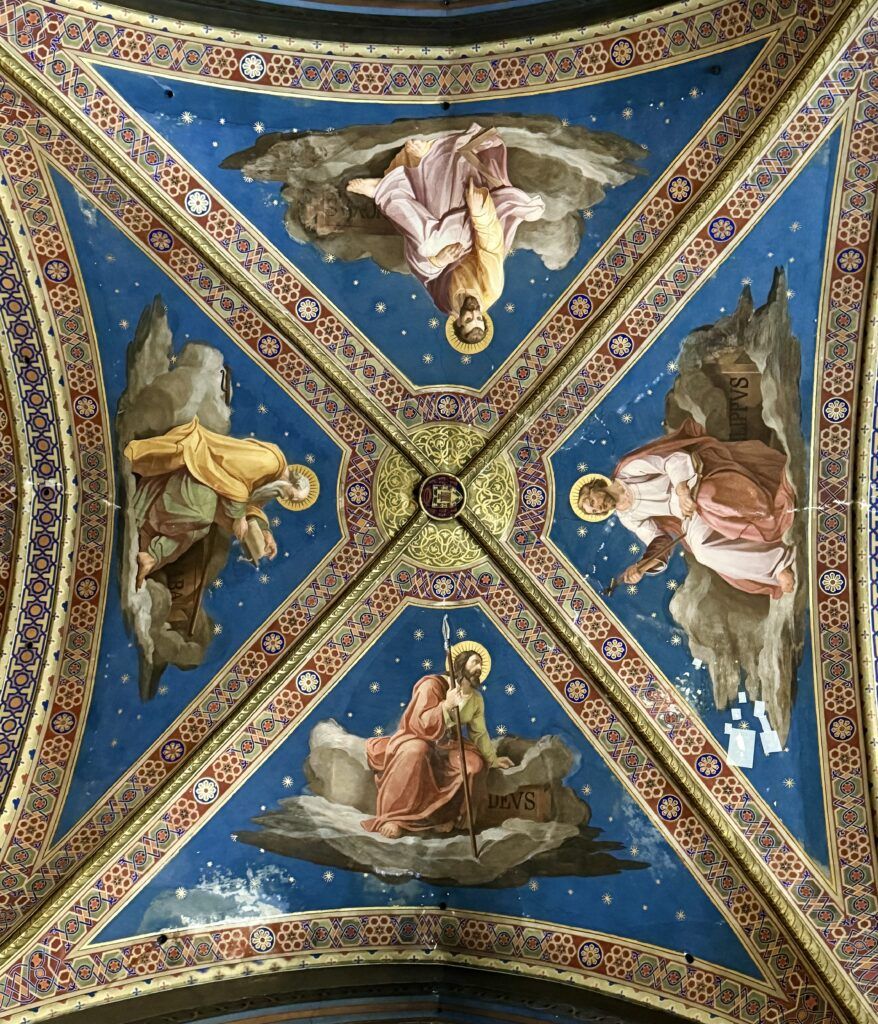
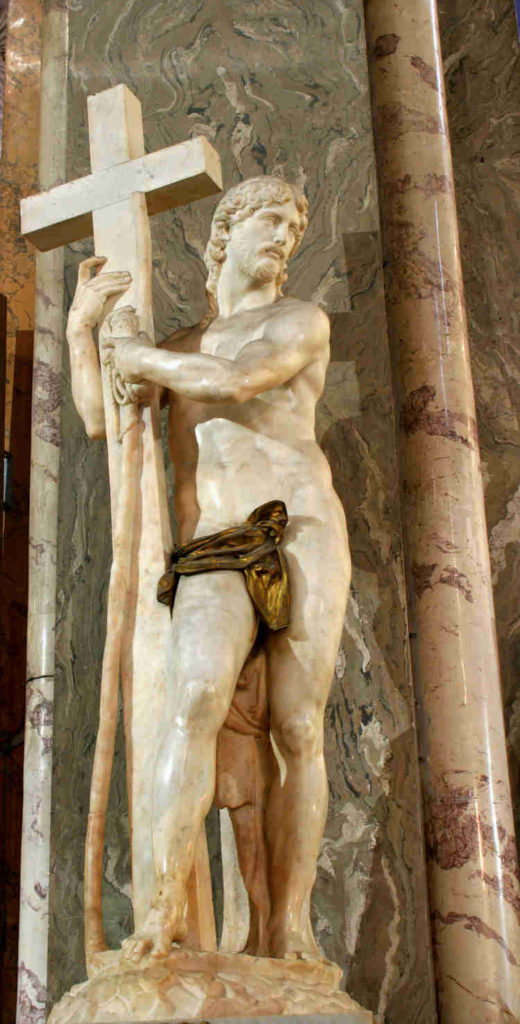
Basilica of Santa Maria Sopra Minerva
The lovely Sopra Minerva is the only Gothic church in Rome, though it’s been modified many times.
The ceiling has bright blue frescos. The Carafe Chapel is home to gorgeous Filippino Lippi frescos illustrating the life of St. Thomas Aquinas.
There’s also a Michelangelo sculpture, though it’s not his best, Christ Bearing the Cross. There are papal tombs, the tomb of Fra Angelico, and the remains of St. Catherine.
In the piazza outside the church is the delightful stone elephant sculpture designed by Bernini. Yet another obelisk stands on it back.
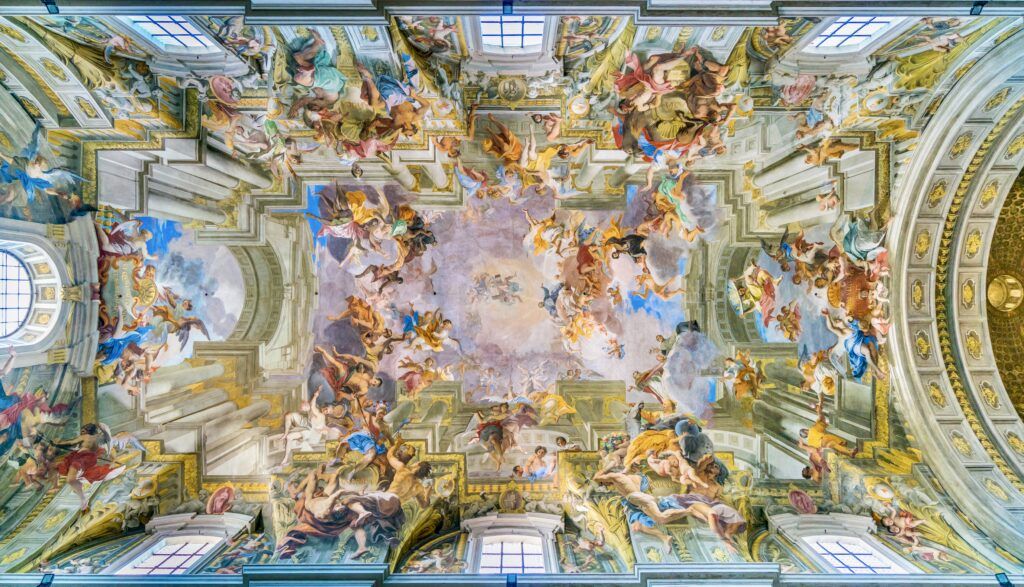
Basilica of St. Ignatius
St. Ignatius Church, just 5 minutes away, is renowned for its Baroque artistry.
The centerpiece of this visual spectacle is the ceiling fresco, Entry of Saint Ignatius into Paradise. It’s an illusionistic piece created by the Jesuit brother Andrea Pozzo in the late 17th century.
This masterpiece, having undergone meticulous restoration, radiates with newfound vibrancy.
There’s a mirror for you to examine it more closely. And there will likely be a long line to take a look.
Palazzo Doria Pamphilj
Tucked away in an opulent 17th century Roman-Rococo palace lies the lesser-known yet magnificent Doria Pamphilj Gallery.
The exquisite art collection, still under the stewardship of the influential Italian Doria Pamphilj family (pronounced as “Pom-fee-lee”). In fact, the audio guide is narrated by Jonathan Doria Pamphlij himself.
The gallery houses over 650 artworks, dating from the 15th to the 18th century. It includes masterpieces by renowned artists such as Bernini, Caravaggio, Velazquez, Titian, Carracci, and Bruegel.
Beyond the artworks, the palace itself is a marvel of artistic craftsmanship. Its walls and ceilings are lavishly adorned with intricate frescoes, elegant tapestries, and sparkling chandeliers.
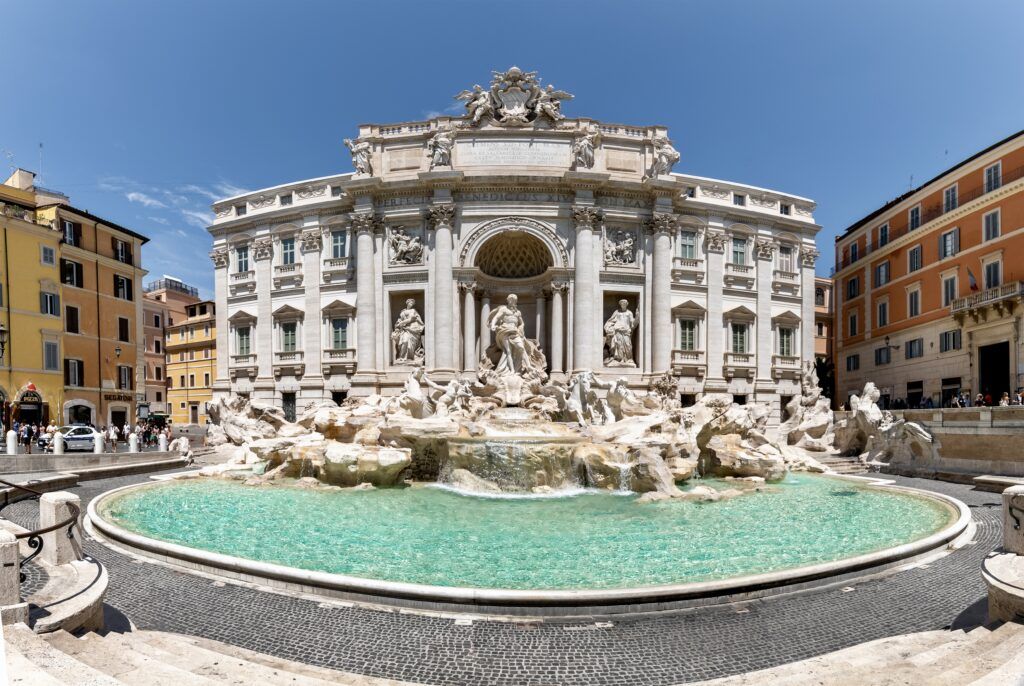
Trevi Fountain
Instantly recognizable, the giant Trevi Fountain lies tucked away on a narrow side street. Even in a city like Rome, where fountains abound, you will be impressed by this one.
It’s a late Baroque masterpiece designed by Nicola Salvi. The central part is dominated by a sculpture of Neptune. Below him, titans struggle with horses.
It’s become tradition to throw a coin in the fountain to guarantee your return to Rome. Judging from the massive crowds and coins, the practice is popular.
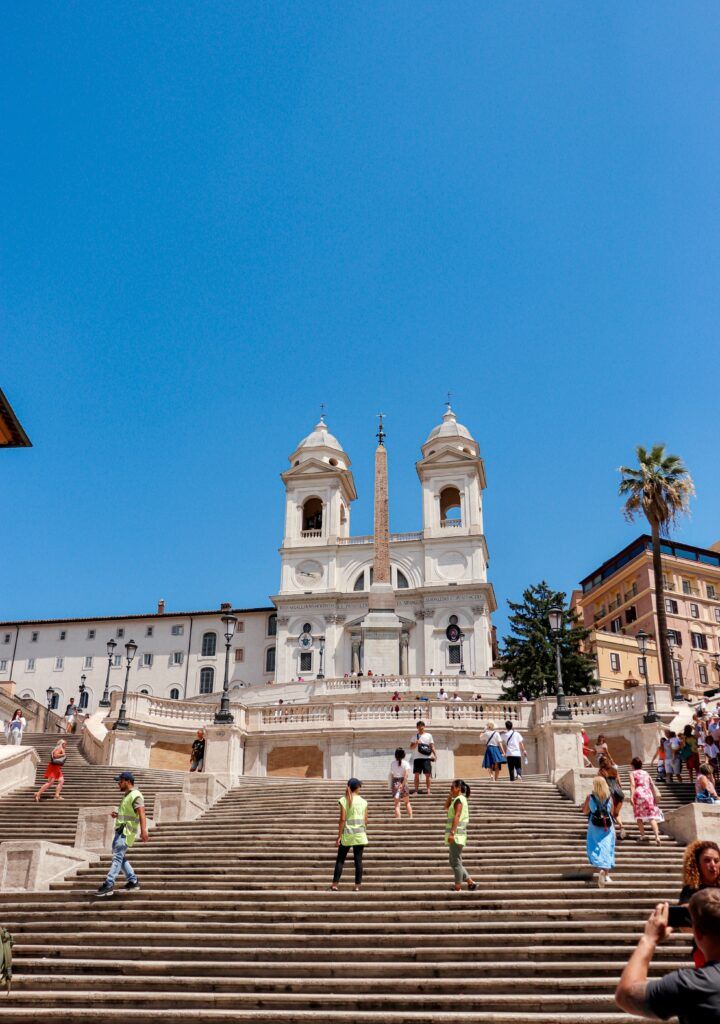
Piazza Espagna
Piazza di Spagna is your next destination. It’s a sprawling pizza with very un-Italian palm trees. You’ll find two of Rome’s major monuments — the Spanish Steps and the Fontana della Barcaccia.
The steps are exceedingly popular with tourists. In the spring, they are adorned with azaleas.
The street directly facing the steps is Via Condotti. It’s the most popular shopping street in Rome. When I was there in December, it was so crowded you could barely walk down it!

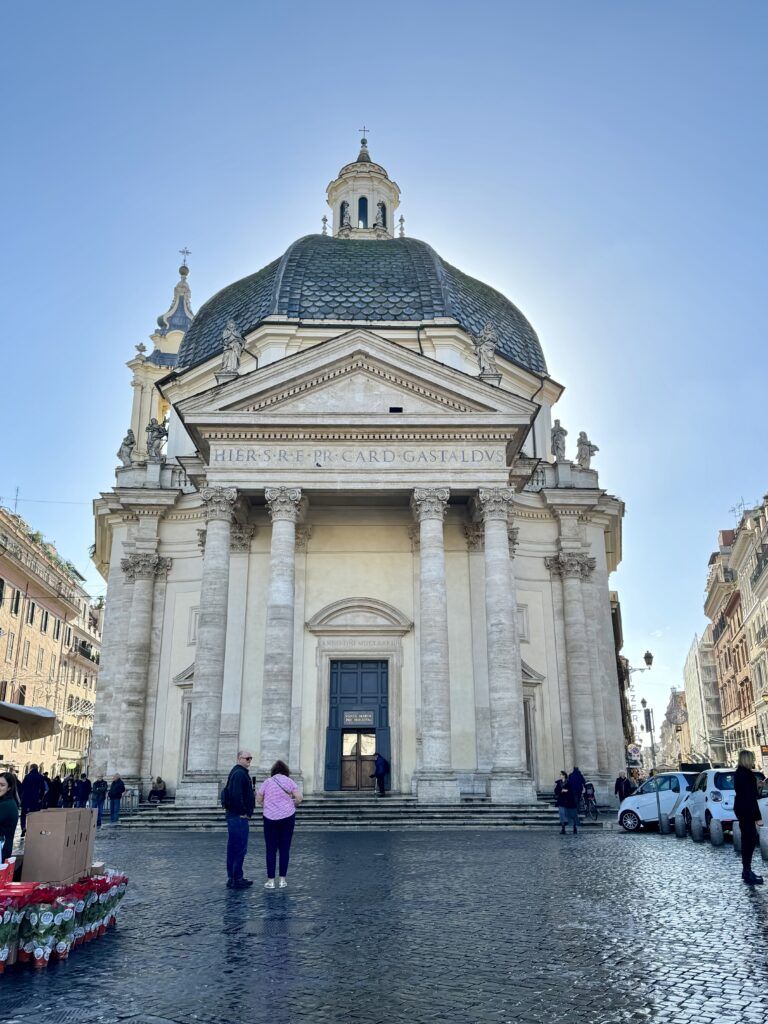
Piazza del Popolo
This is one of the most impressive piazzas in Rome. The massive Porta del Popolo is one of the principal entrances to the city.
In the center is an Egyptian obelisk that once stood in the Circus Maximus. There are two twin churches, one redesigned by Bernini.
But the church to visit is Santa Maria del Popolo. The interior decoration is of immense artistic value.
The Della Rovere chapel has frescos by Pinturicchio. The Cerasi Chapel is home to two Caravaggio paintings. And the Chigi Chapel has works by Raphael.
You can also climb the stairs up to the Pincio Terrace. It’s a scenic viewpoint offering some of the most stunning panoramic views of the city.
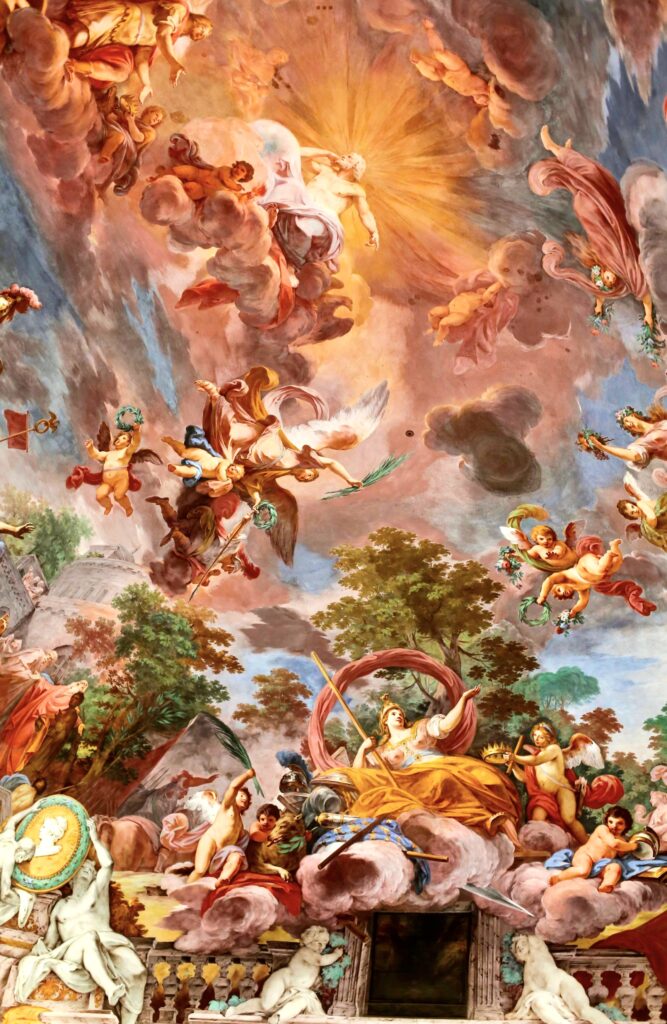
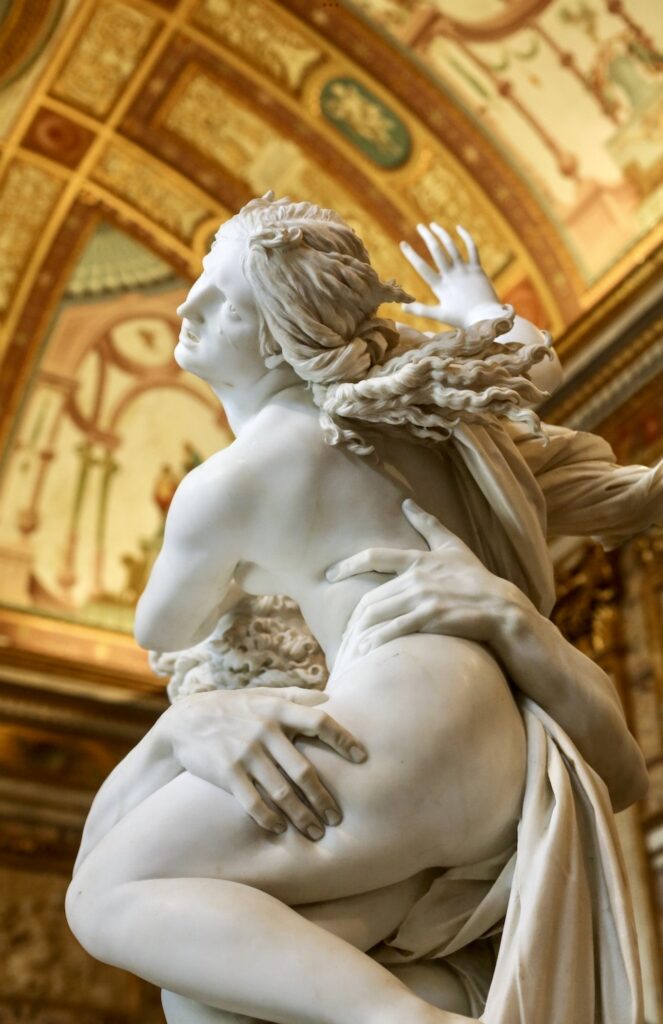
Borghese Gallery
Polish off your first day with a visit to my favorite museum in Rome, the world renowned Borghese Gallery. It’s open until 7:00 pm and you’ll definitely need to book a skip the line ticket well in advance to visit. You cannot walk up and buy tickets onsite.
The museum is in a magnificent palace owned by Cardinal Borghese. The interior is ravishing — frescoed ceilings, sumptuous wall coverings, marble and porphyry decoration, and gilded moldings.
The sculpture collection contains some of the most famous pieces in the world, including masterpieces by Bernini and Canova.
The pinacoteca, or painting gallery, is one masterpieces after another. You’ll find seminal artworks by Botticelli, Titian, Caravaggio, Bronzino. The Venetian Room is to die for!
>>> Click here to book a guided tour of the Borghese
Dinner
Since you’re in this area, I suggest you have dinner at Diandra near the Spanish Steps. Opened in 2023, it’s a sleek restaurant serving Roman and Sardinian specialities.
Another good restaurant is Da Bolognes, near Piazza del Popolo.
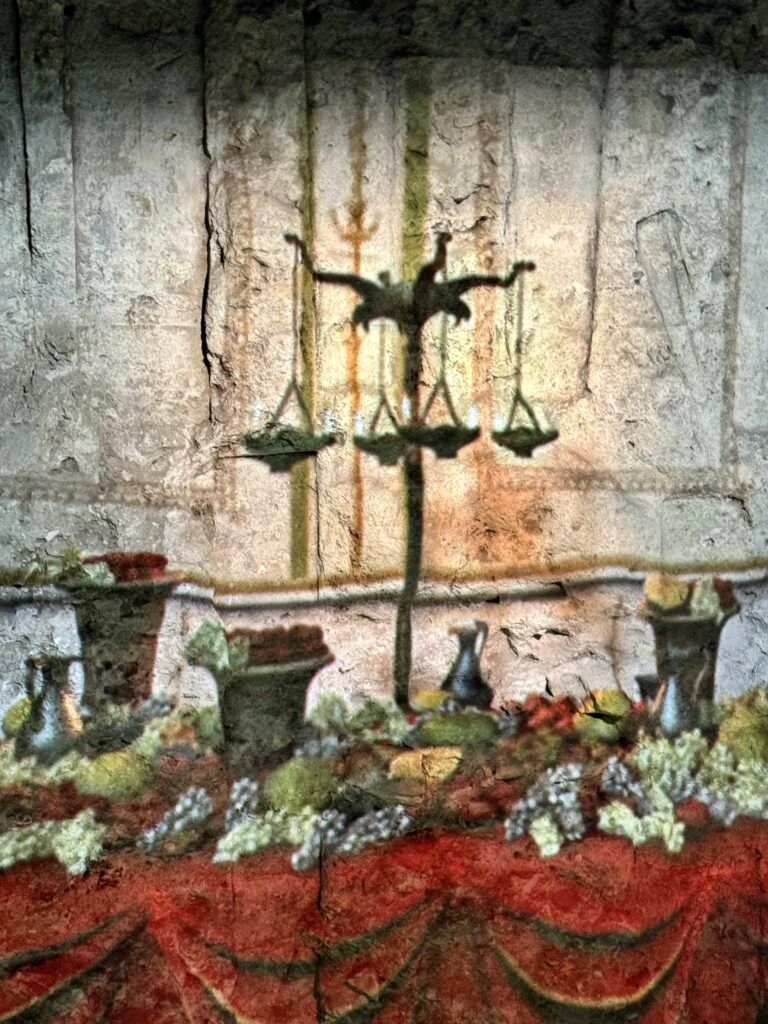
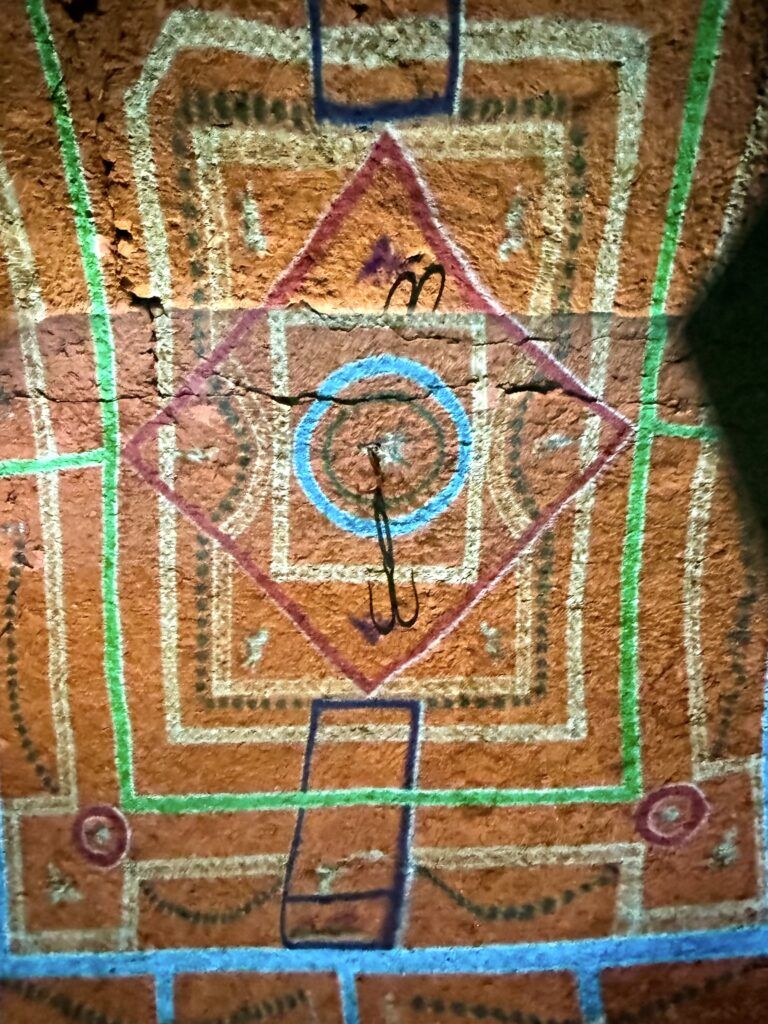
Palazzo Valentini
Start off day 2 with a 3D virtual experience at the Domus Romane di Palazzo Valentini near the imperial fora.
Buried for centuries, archaeologists discovered the remains of two ancient 4th century Roman villas of high ranking Romans under Palazzo Valentini. You will see a wealth of mosaics, marble, and bits of frescos.
The sound and light show tour takes about an hour. You will ooh and aah as you see the villa recreated into physical form. It was the first multimedia project at an archaeological site in Italy.
Everyone on my tour thought it was fantastic, a great way to bring the ruins to life. At the end, you’ll spill out onto Trajan’s Forum.
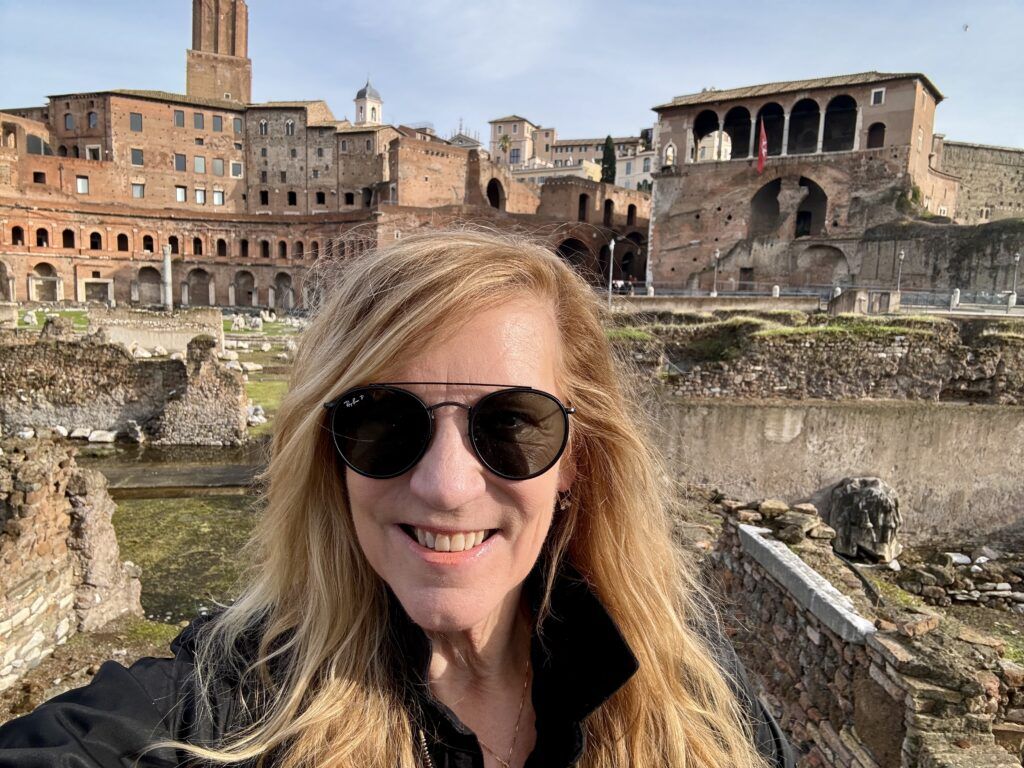
Trajan’s Market
Although you can see this iconic building from the road, it’s worth going inside for a real look. The entrance is at Via Quattro Novembre, 94.
The market is a 3-4 story semicircular structure that was a shopping mall for ancient Romans. Trajan built in in the 2nd century.
You can wander from room to room and see what life was like for ancient Romans.
On the upper level is the Museum of the Imperial Forums. Each room is dedicated to a specific forum.
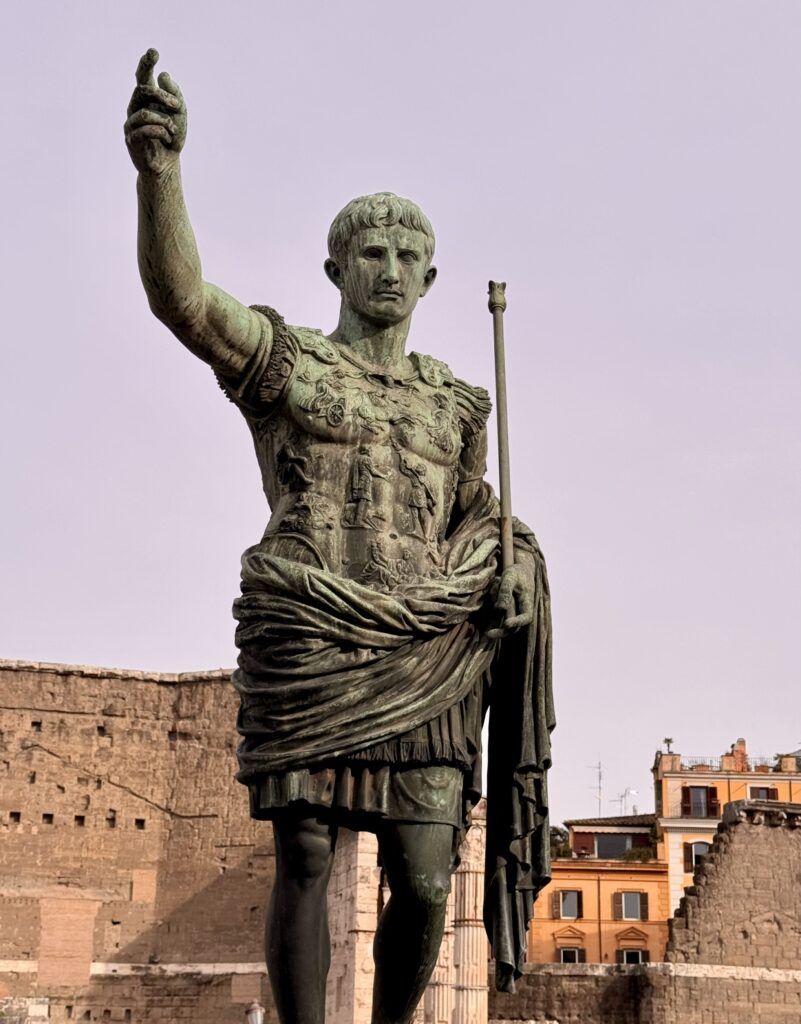
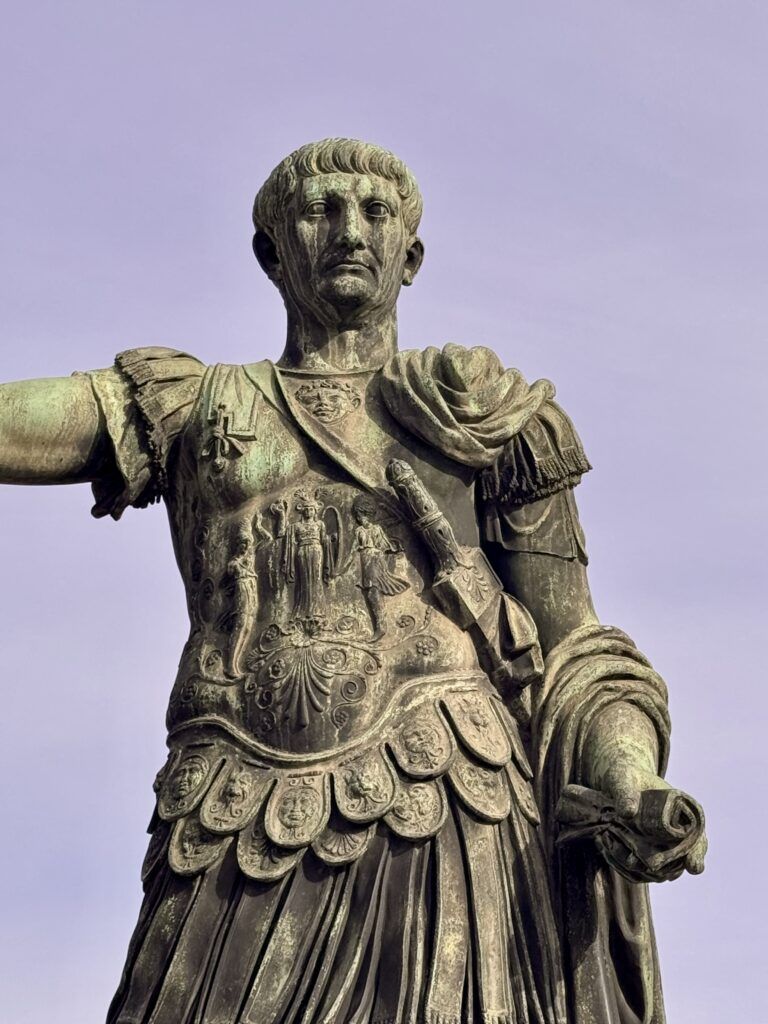
Via Imperiali dei Fori
When you’re done, take a stroll down Via Imperiali dei Fori. It stretches from the Piazza Venezia to the Colosseum.
It’s one of the busiest streets in Rome and there are sometimes musicians performing.
Along the way, you’ll see the forums of Trajan, Augustus, Caesar, Nerva, and Vespasian. Statues of the emperors are in front of their own forums.
You can buy a ticket to walk among them. But you can see them pretty well from the street.
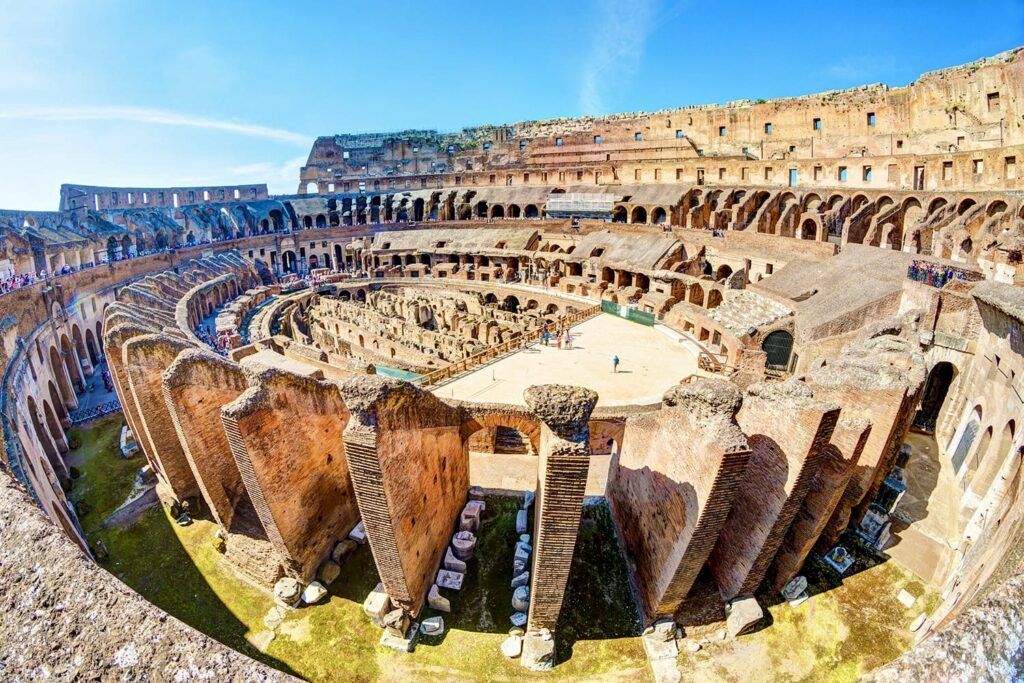
Colosseum
Properly called the Flavian Amphitheater, the Colosseum was built by threee Flavian emperors to promote a good public image. Construction began under Vespasian and the arena was inaugurated in 80.
The stone oval is the largest amphitheater from the Roman world. it’s composed of three arcades, topped by a fourth story attic. The columns, from the ground up, follow the classical order of Doric, Ionian, and Corinthian.
This was where Rome came to see the gladiatorial games, animal hunts, and public executions. There were special seats for the big wigs.
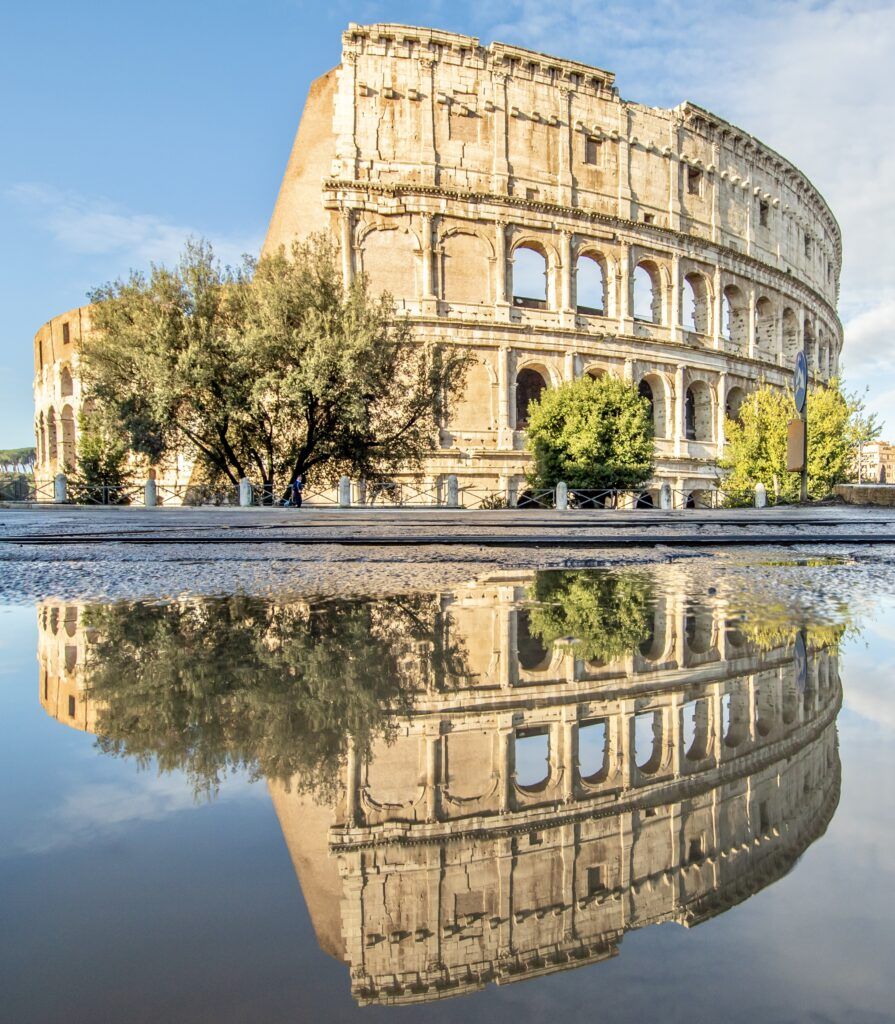
You’ll need to pre-book a timed entry skip the line ticket. You can also book a guided tour that takes you to the underground arena, where gladiators prepped. I took this tour and highly recommend it.
Roman Forum & Palatine Hill
The Roman Forum and Palatine Hill are a package deal. You can visit them with the trifecta ticket that includes the Colosseum.
You can visit on a guided tour. I took this tour with a PhD archaeologist and loved it!
You can also visit with a SUPER ticket. This gives you access to some restricted sites that are just amazing. You can read about it in my SUPER Ticket guide.
Forum
For 1,000 years, the Roman Forum was the nerve center of an empire. Altered and rebuilt over the centuries, its monuments can seem rather confusing and there is precious little signage.
Today, all the remains is a jumble of atmospheric ruins. But, as you wander through its paths, you’re treading the same ground where triumphant processions, public speeches, and pivotal political activities once took place.
Highlights include the Temple of Saturn, Arch of Titus, the Curia Julia, the Temple of Vesta, the House of the Vestal Virgins, and the Basilica of Maxentius and Constantine.
If you have the SUPER ticket, you can also visit the Church of Santa Maria Antiqua with beautiful medieval frescos. From the church, you can take the Neroian Cryptoporticus up to Palatine Hill.
Palatine Hill
One of the loveliest spots in the city, the Palatine Hill was the site of Rome’s ancient imperial palaces.
None of the structures are really intact today. But with some imagination, you see the ruins of where it all started.
There are essentially five parts:
- ruins of the imperial palaces, particularly that of Domitian
- Houses of Augustus and Livia
- Palatine Museum
- Belvedere Terrace, with views of the Roman Forum
- Domus Tiberiana, which just opened in September 2023
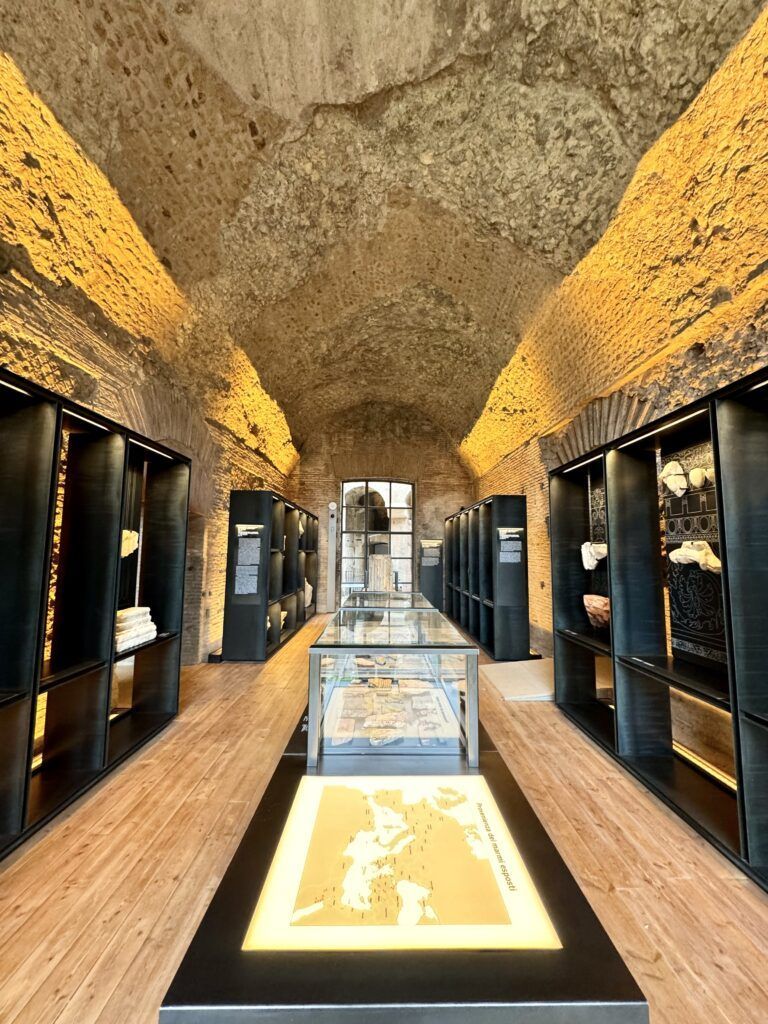
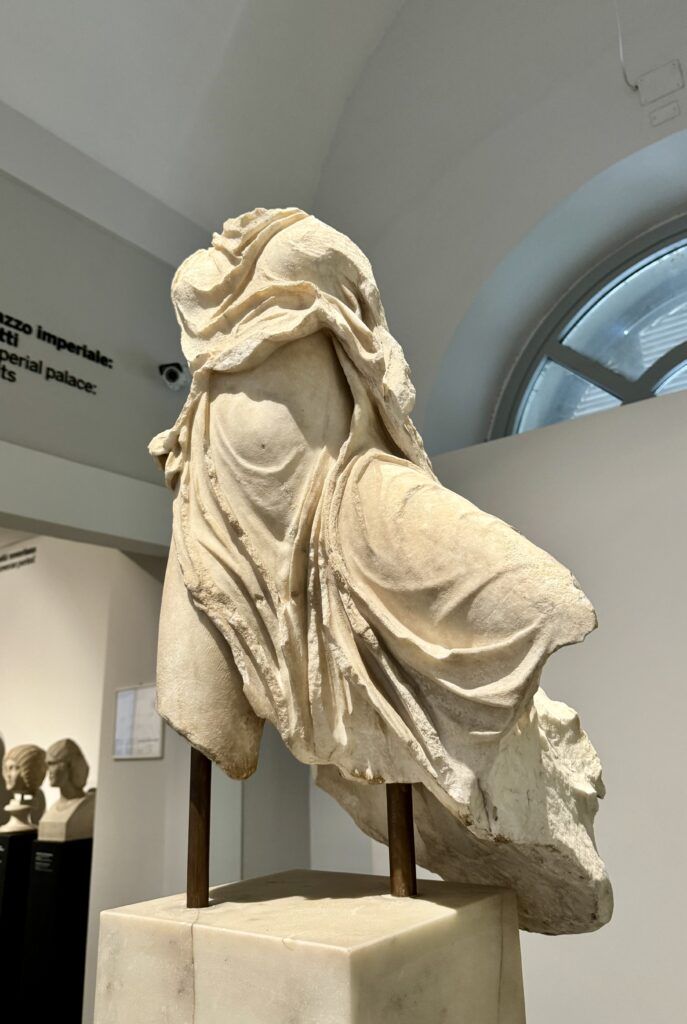
You can enjoy the terrace and see marble and ruins from the imperial palace. But to see the other sites, you’ll need the SUPER Ticket.
I highly recommend a visit to the House of Augustus to see the colorful Pompeiian frescos. Three times a day, there’s a 3D sound and light show.
Domus Tiberiana is the huge building you see in the forum with arches behind the House of the Vestal Virgins. It was an amazing experience to tread down the towering corridors and see the artifacts found during excavation.
>>> Click here to book a SUPER Ticket on Viator
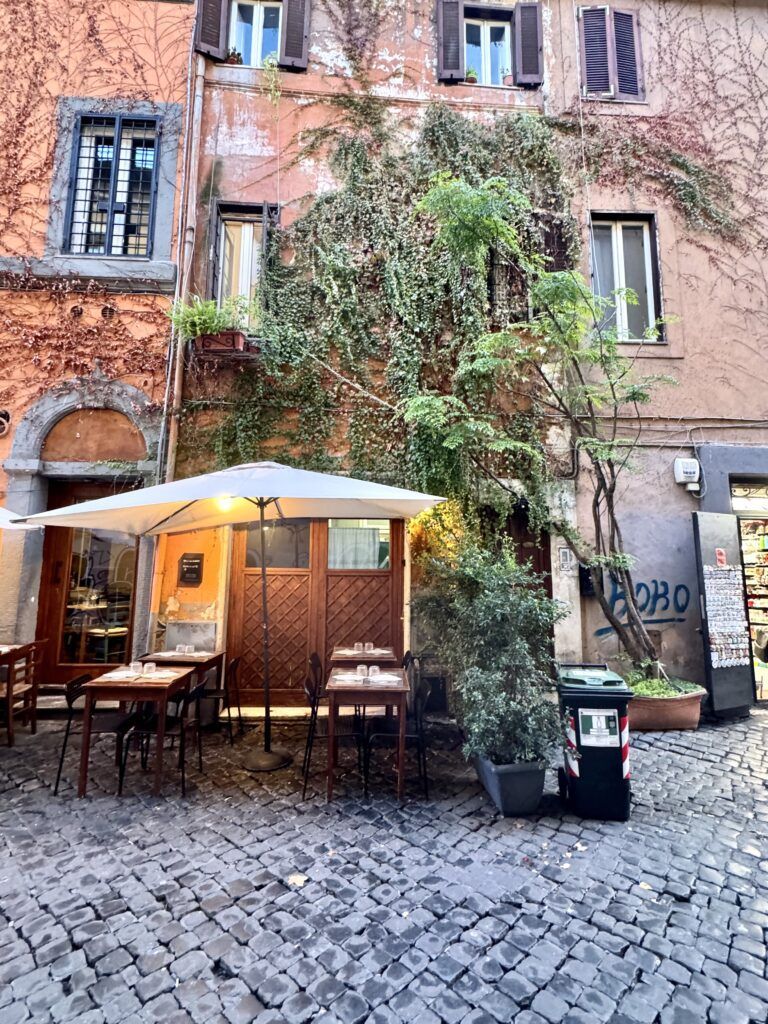
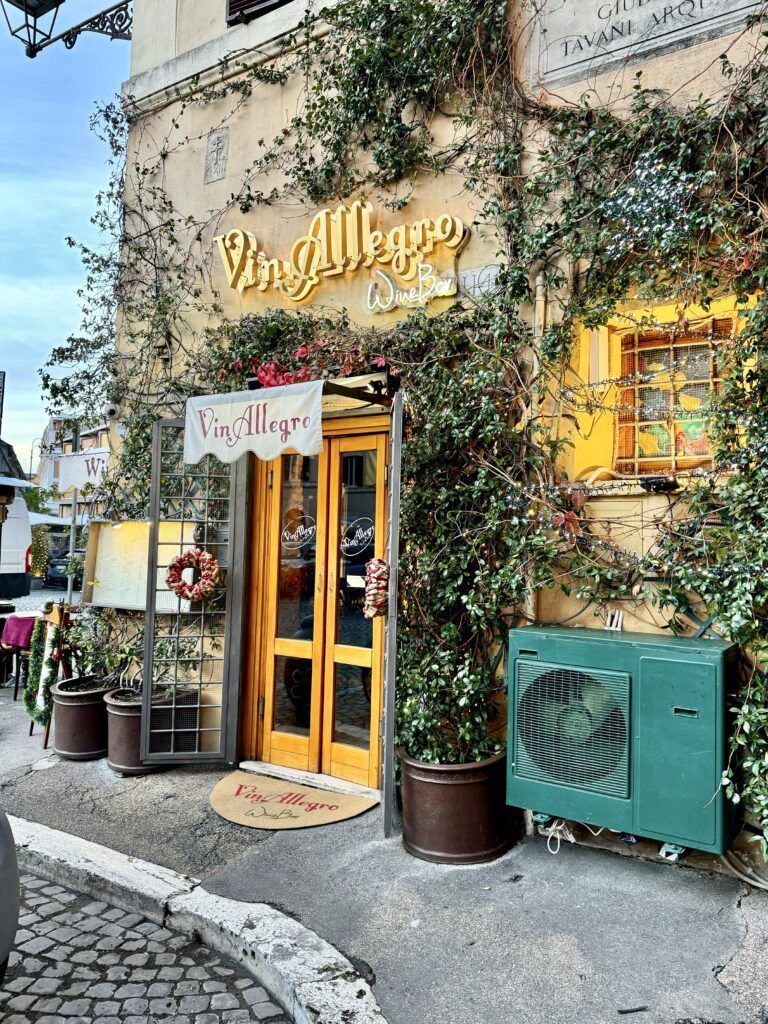
Trastevere
In the early evening, head to the Trastevere neighborhood and take a stroll through its picturesque ivy-covered streets. You can pop in to see the mosaics art Santa Maria in Trastevere.
This is a good area for dinner. Try Zia, Checca, or Da Enzo al 29. To have a drink with the locals, head to San Calista bar where the owner still presides.
You can also go on a guided food and wine tour in Trastever, which I loved.
Vittoriano
Begin day 3 of 4 days in Rome at Piazza Venezia’s striking “wedding cake” monument, officially known as the Altar of Peace. It’s free to climb up to the higher terraces for views.
If you’re up for a unique experience, find your way to the back and purchase a ticket for the glass elevator. This ride swiftly takes you to the summit, providing one of the most spectacular panoramic views Rome has to offer.
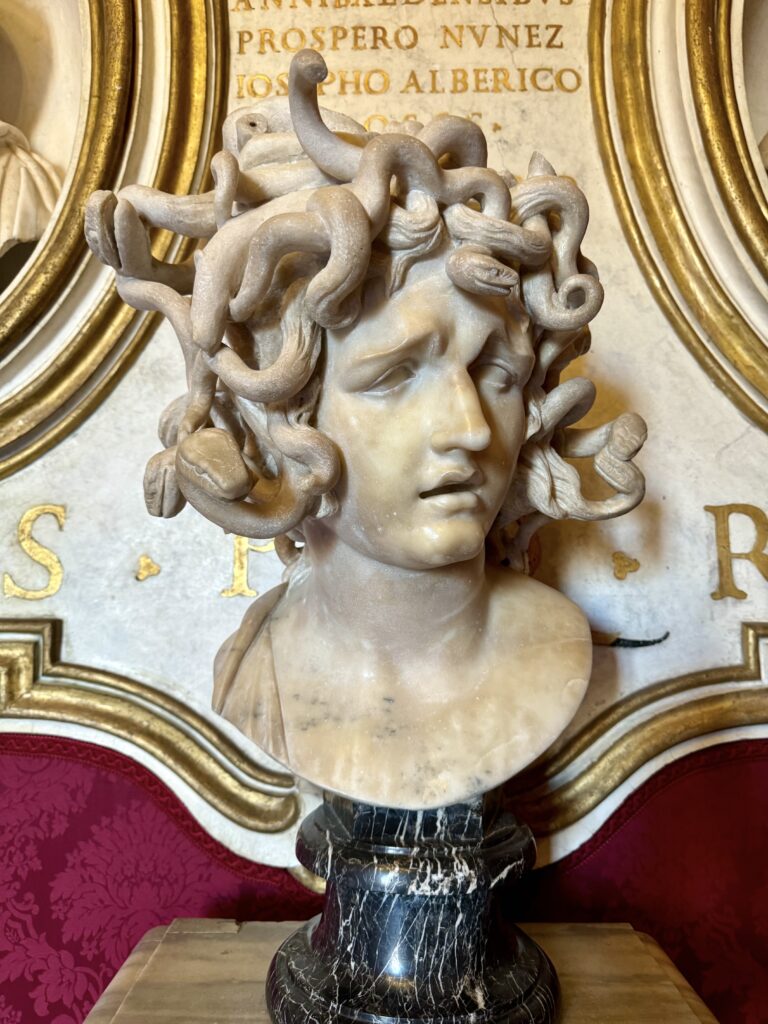
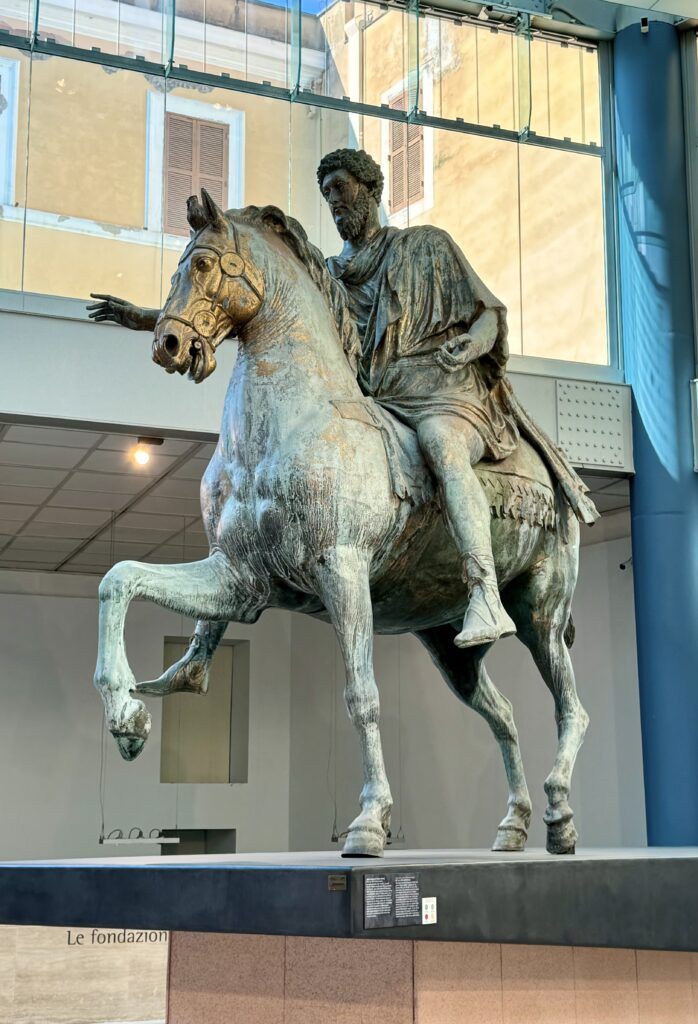
Capitoline Museums
The Capitoline Museums are one of the world’s oldest public museums. It consists of two palazzi on Piazza del Campidoglio. They are connected by a passageway that affords splendid views of the Roman Forum.
You start in the delightful courtyard. There, you find bits and pieces of the marble statue of Constantine, which was once 30 feet high. You’ll also see the “talking” statue of Marforio, a river god.
The first floor houses magnificent ancient statuary, with sculptures of the She-Wolf, Boy With a Thorn, Dying Gaul, and Bernini’s Statue of Urban VIII.
On the top floor is the pinacoteca or painting gallery. There are works by Caravaggio, Titian, Rubens, Guide Reni, and Annabale Carraci.
>> Click here to book a guided tour
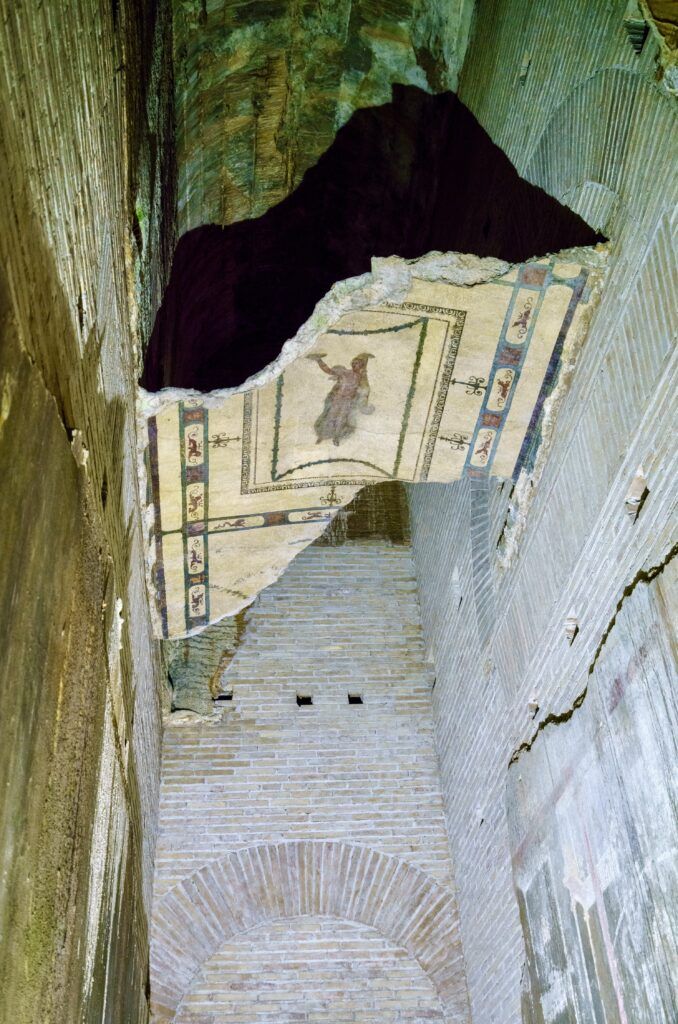
Domus Aurea
Domus Aurea, or Nero’s Golden House, was once considered the most opulent edifice on the planet. It’s still an active archaeological dig.
Constructed under the reign of Emperor Nero between 64-68 AD, this luxurious complex was a sight to behold. The walls and facades were embellished with intricate frescoes, gold leaf, glass mosaics, pearls, and fine marble.
However, the Golden House was looted and destroyed after Nero’s reign. Despite this, some of the palace’s frescoes managed to survive. And you can see them reimagined with a 3D sound and light show.
There are limited spots and tickets sell out lightening fast, so you’ll want to book a skip the line ticket well in advance. You can also book a 2 hour guided tour.
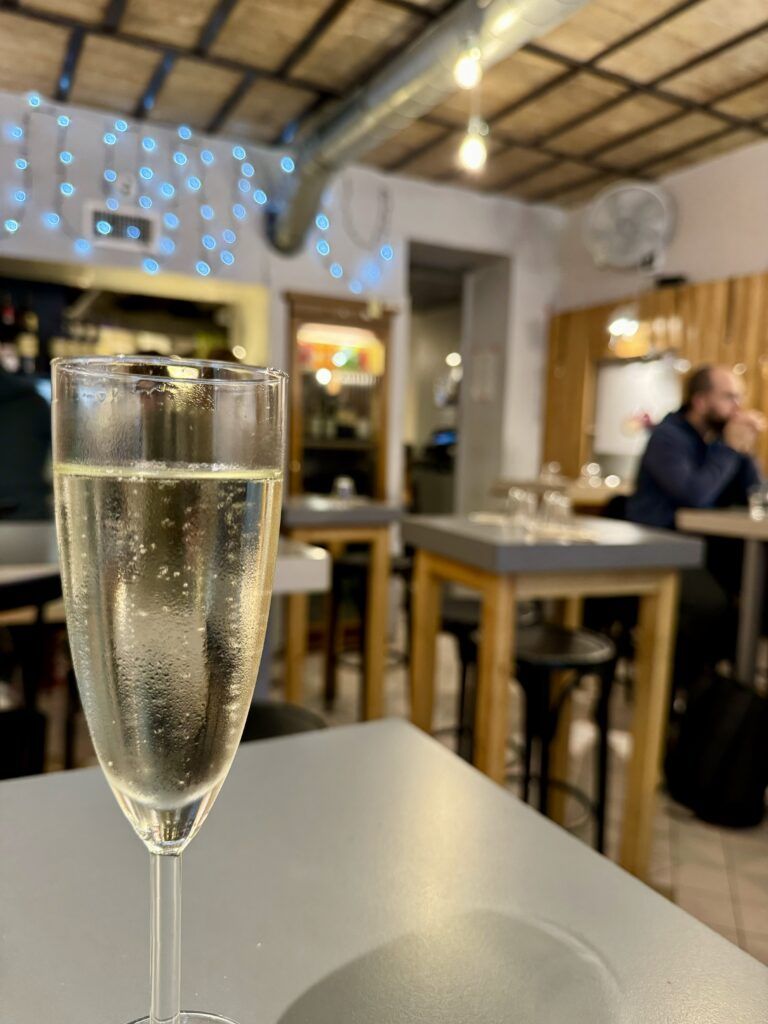
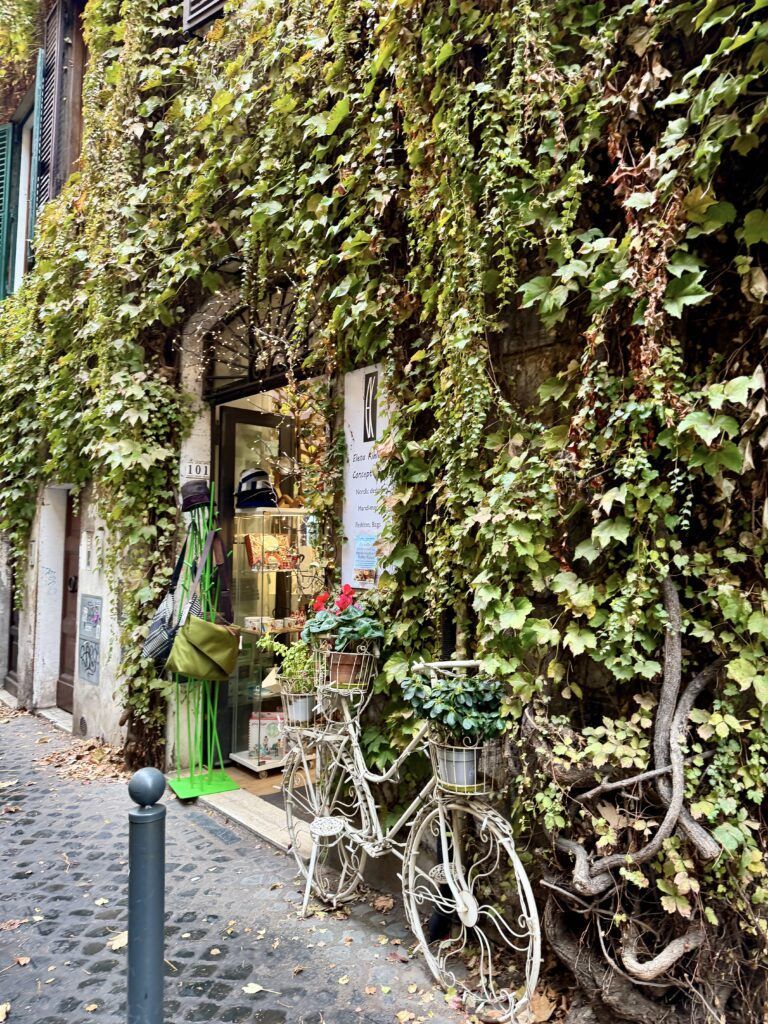
Via Urbana
This is a good time to break for lunch in Monti. I like a lot of the spots on the quaint Via Urban. I had great meals at Pasta Urbana, Sciue Scieu Cucina, and Broccoletti.
St. Peter in Chains
Then, it’s time to inspect Michelangelo’s famous Moses sculpture at San Pietro in Vincoli. It’s located at the end of the right transept.
This is the pièce de résistance of the unfinished tomb for Pope Julius II, the pope who ordered Michelangelo to paint the Sistine Chapel.
It’s an incredibly expressive statue, which shows Moses returning from Mount Sinai carry God’s commandments. He’s scowling and looks ferocious.
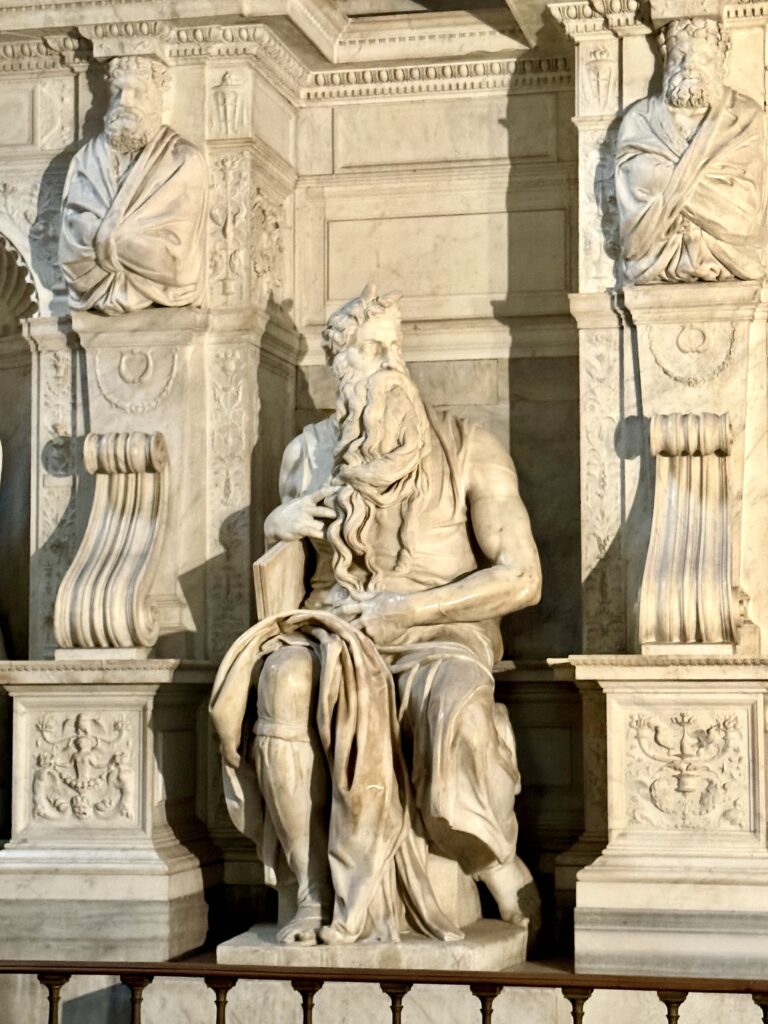
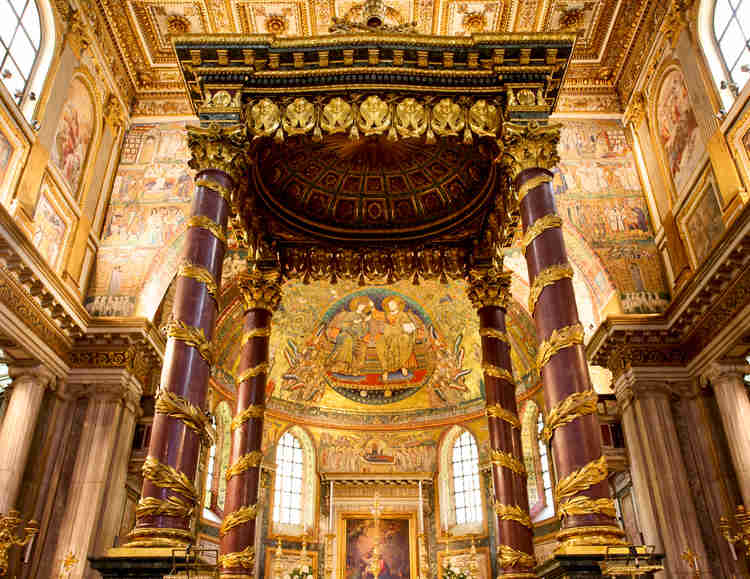
Santa Maria Maggiore
Santa Maria Maggiore was built by Pope Sixtus in the early 5th century.
The facade, redesigned in the 18th century, is a striking example of Baroque architecture.
It features a loggia, a series of columns, and statues of various religious figures. The 14th century bell tower is one of the tallest in Rome, standing at almost 250 feet.
The church is most famous for its 5th century mosaics in the nave and triumphal arch, depicting scenes from the Old Testament. You’ll also find the grave of Bernini and a baldachin similar to the one in St. Peter’s.
Santa Prassede
In Rome’s Monti neighborhood, mere steps away from the grand Santa Maria Maggiore, lies the hidden gem of the Church of Santa Prassede.
This unassuming structure, dating back to the 9th century, may not catch your eye at first glance due to its simple exterior. However, stepping inside Santa Prassede unfolds a different story altogether.
You’ll find yourself in one of Rome’s most stunning and historically rich churches. The interior is a captivating medieval space.
It’s adorned with resplendent 9th-century Byzantine-style mosaics, the finest in all of Rome. The best ones are in the apse and the Chapel of San Zeno.
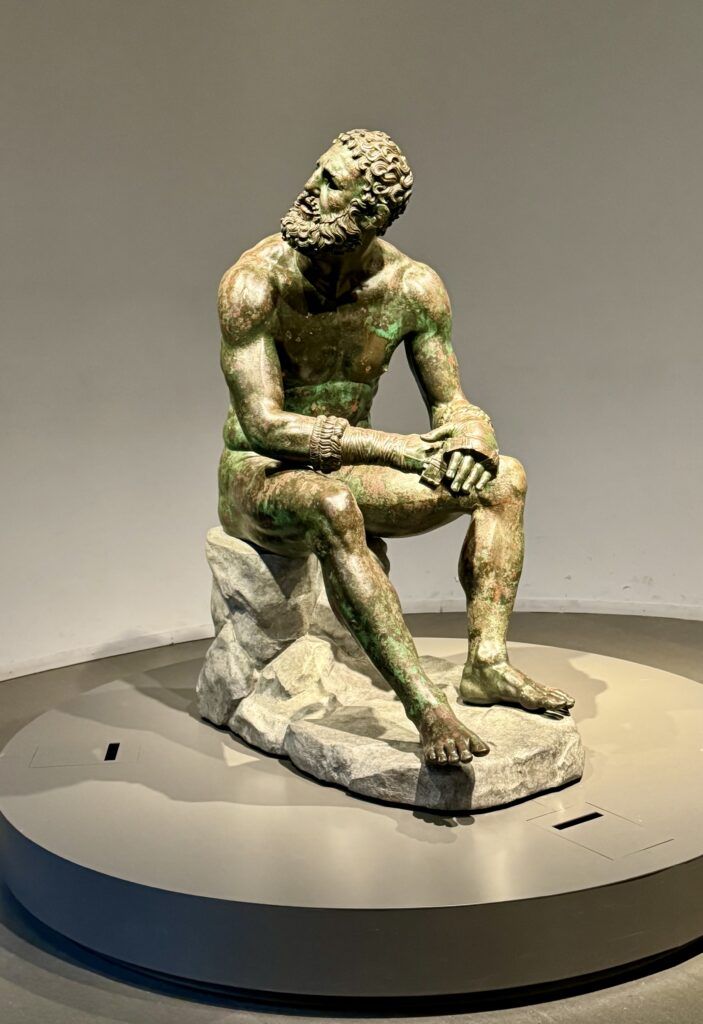
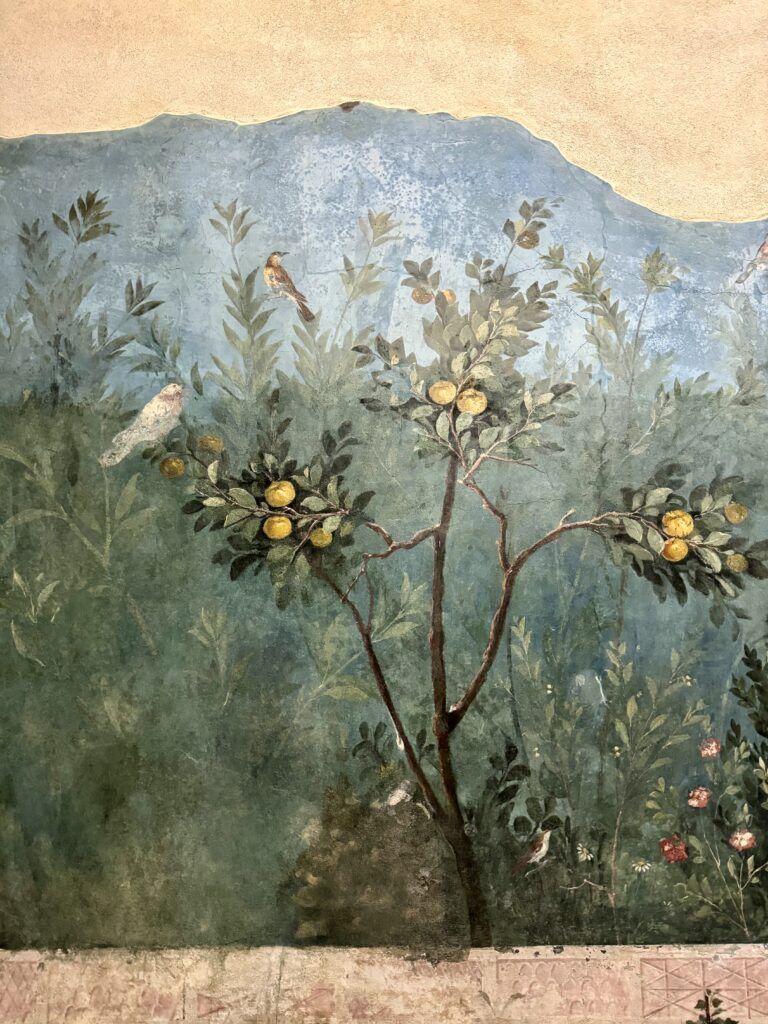
Palazzo Massimo
Palazzo Massimo is one of my favorite museums in Rome. It’s a well-organized space that’s part of the National Museum of Rome.
It has a unique exhibition of Roman frescos and mosaics. The frescos come from the House of Livia and Villa Farnesina. Livia’s magical garden frescos are among the most beautiful I’ve ever seen.
The museum’s collection of Greek and Roman statues is equally magnificent. This is where you’ll find the Via Labicana Augustus, the Boxer at Rest, and a who’s who of Roman portrait busts.
The Boxer may be my favorite sculpture from antiquity. It’s absolutely mesmerizing.
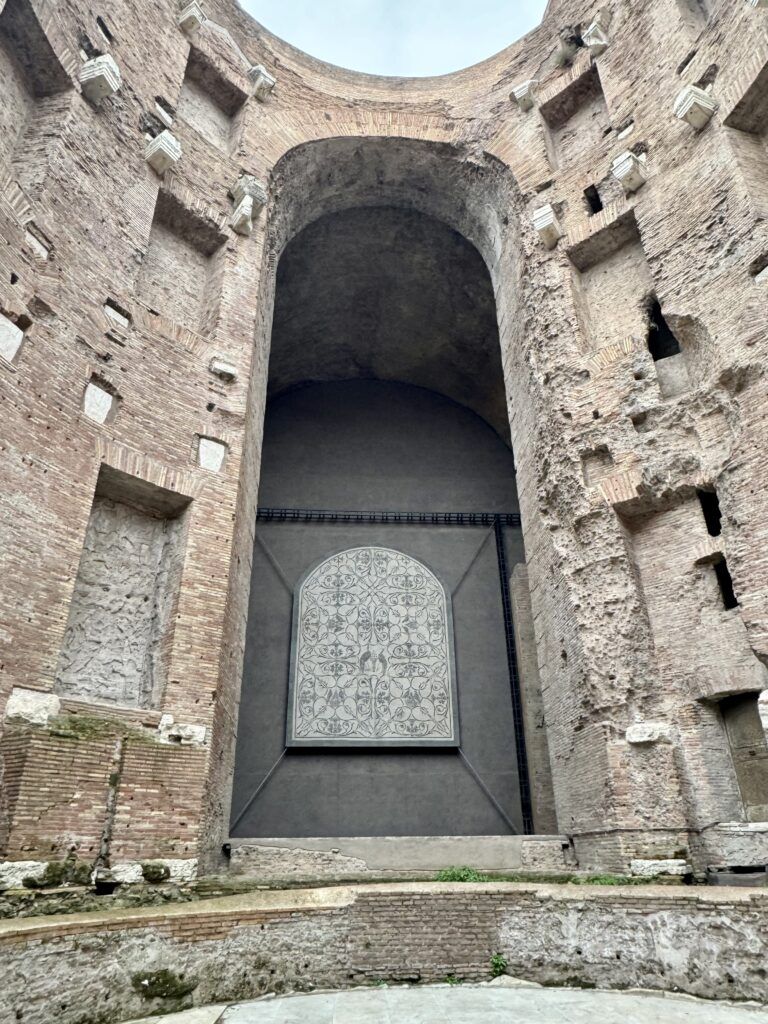
Diocletian’s Baths
If you have any time left in your time, cross the street and visit Diocletian’s Baths. They were inaugurated in 306.
The baths were so well built that most of the complex’s outer structure is still standing. The frigidarium (cold baths) and the natatio (swimming pool) were laid out on a central axis.
In the 16th century, Michelangelo designed a church using part of the baths, Santa Maria degli Angeli. It was built into the ape of the calidarium (hot baths).
Today, the baths house the Epigraph Museum and host special exhibitions.
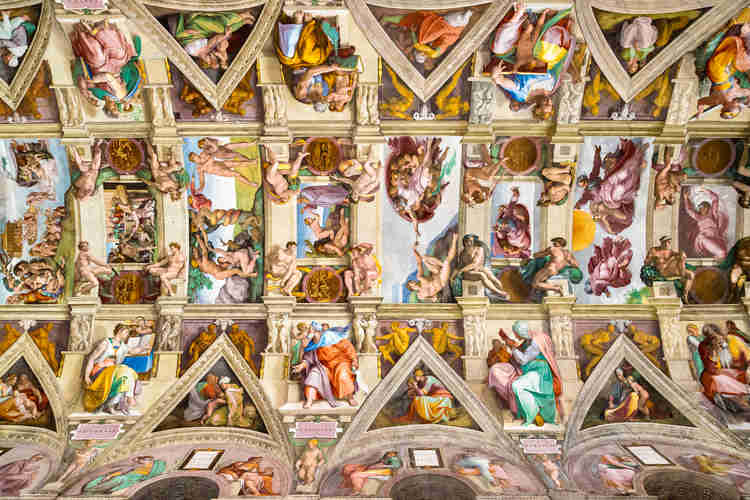
Vatican Museums
It’s hard to think of any greater museums than those of the Vatican. There are entire rooms painted by Raphael and ceilings frescoed by Michelangelo.
The museums are immense. There are 26 of them, so you can’t see everything.
Select what interests you the most. You may want to bring a pair of binoculars to see details up close.
You really can’t visit without booking a skip the line ticket. If you’re a first timer, you may want to book a guided tour. If you’re an early bird, the early morning tour is a good way to beat the crowds.
I’ve written scads on the Vatican. You can find more information here:
- Masterpieces of the Vatican
- Guide to the Vatican Pinacoteca
- Guide to the Vatican’s Raphael Rooms
- Guide to the Sistine Chapel
- 1 day itinerary for Vatican City
- Hidden gems in the Vatican
- Famous sculptures in the Vatican
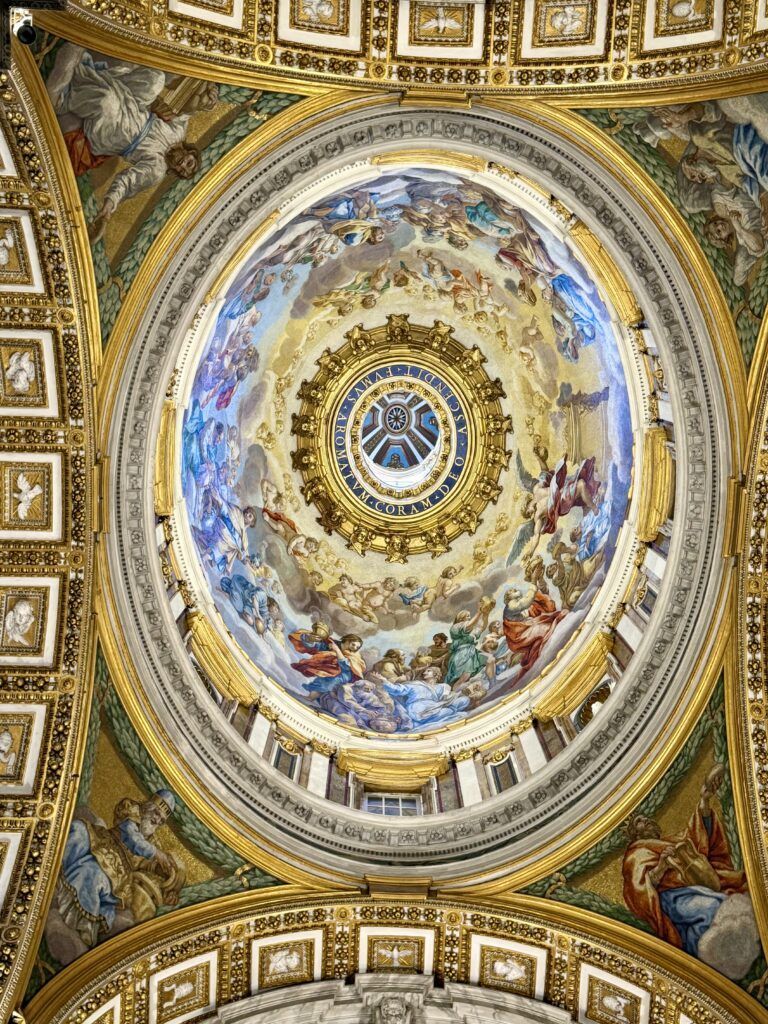
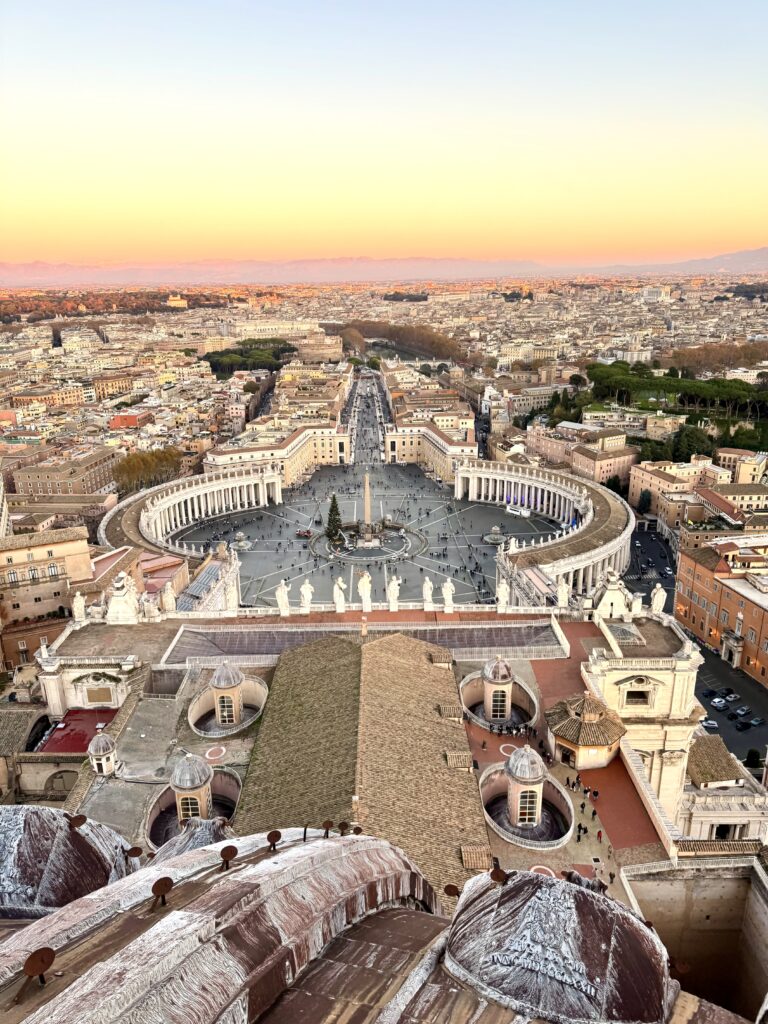
St. Peter’s Basilica
St. Peter’s is a miracle in stone. It took more than a century to complete at incalculable cost.
Three sets of steps, flanked by statues of St. Peter and St. Paul, lead to the entrance. The Baroque facade is by Carlo Maderno.
Inside, you’ll find an overwhelming Baroque interior. Most of this is due to Bernini and you’ll find his sculpture inside as well as Michelangelo’s Pieta.
The basilica’s dome was designed by Michelangelo, with interventions by other architects. Climbing it is a must!
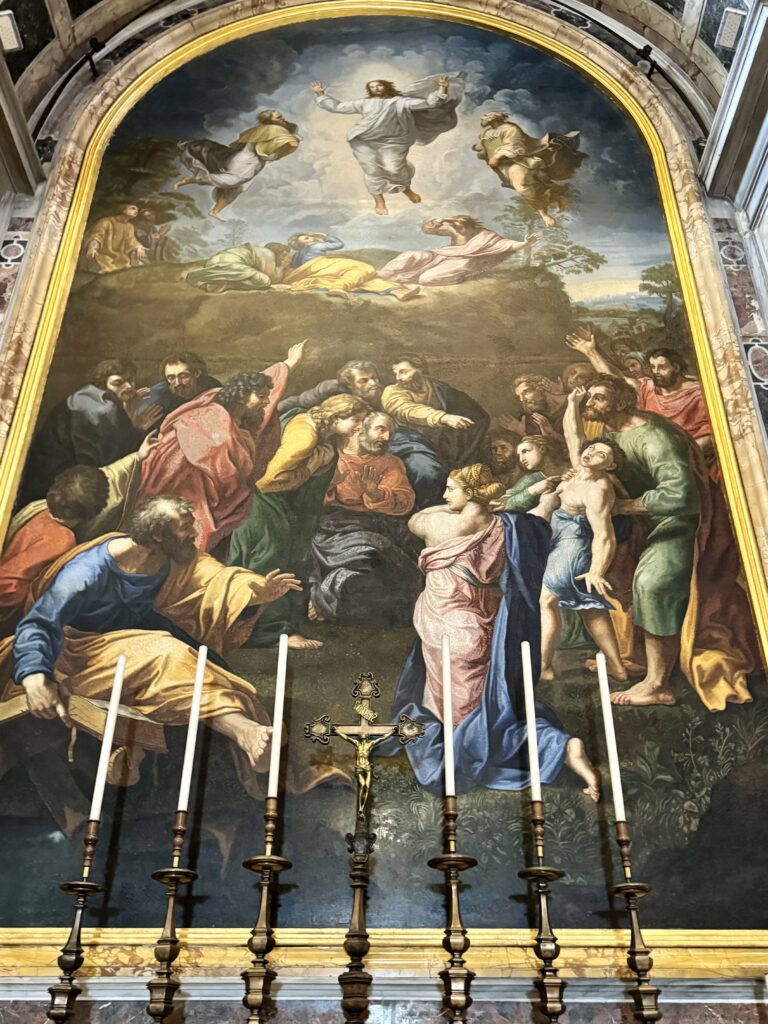
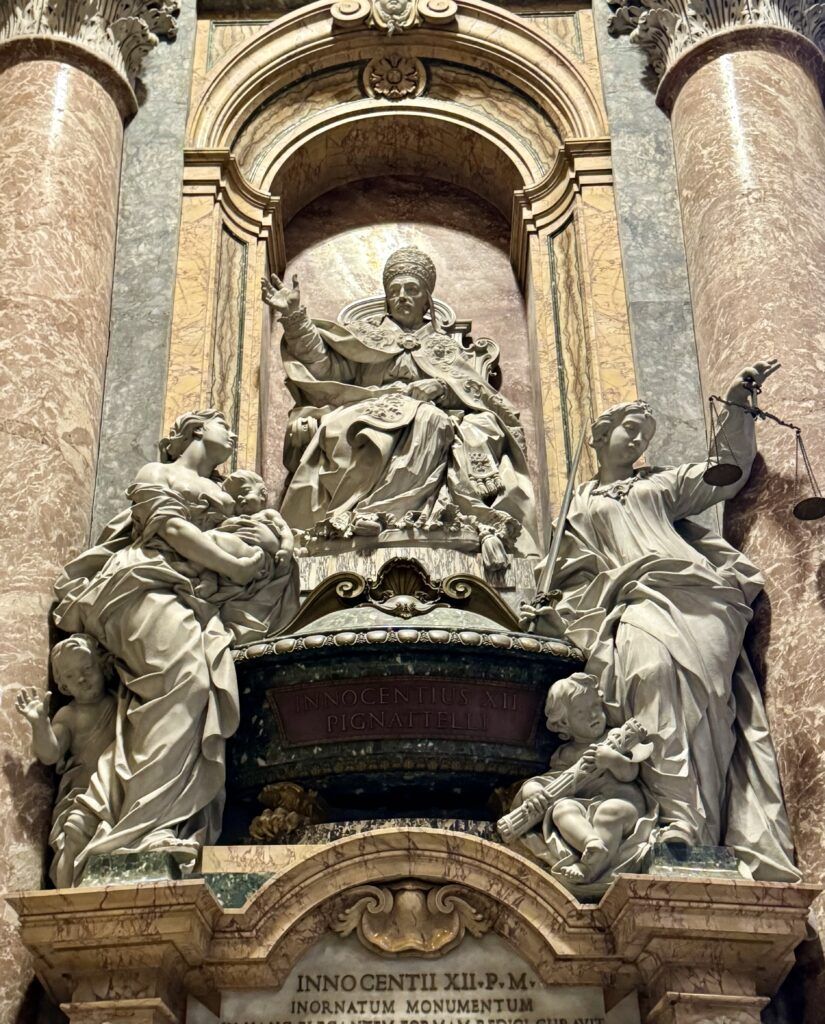
You can hike up 550 steps or take the elevator and hike up 320. Book a ticket in advance for this.
For all the details and tips, check out my guide to St. Peter’s Basilica.
Castle Sant’Angelo
At least take a stroll by Castle Sant’Angelo. This cylindrical building is also known as the Mausoleum of Hadrian.
Inside, you can see some lovely frescos, artifacts, and the papal apartments. There is also a cafe to grab some lunch. From there, you’ll have beautiful views of St. Peter’s.
>>> Click here to book a skip the line ticket
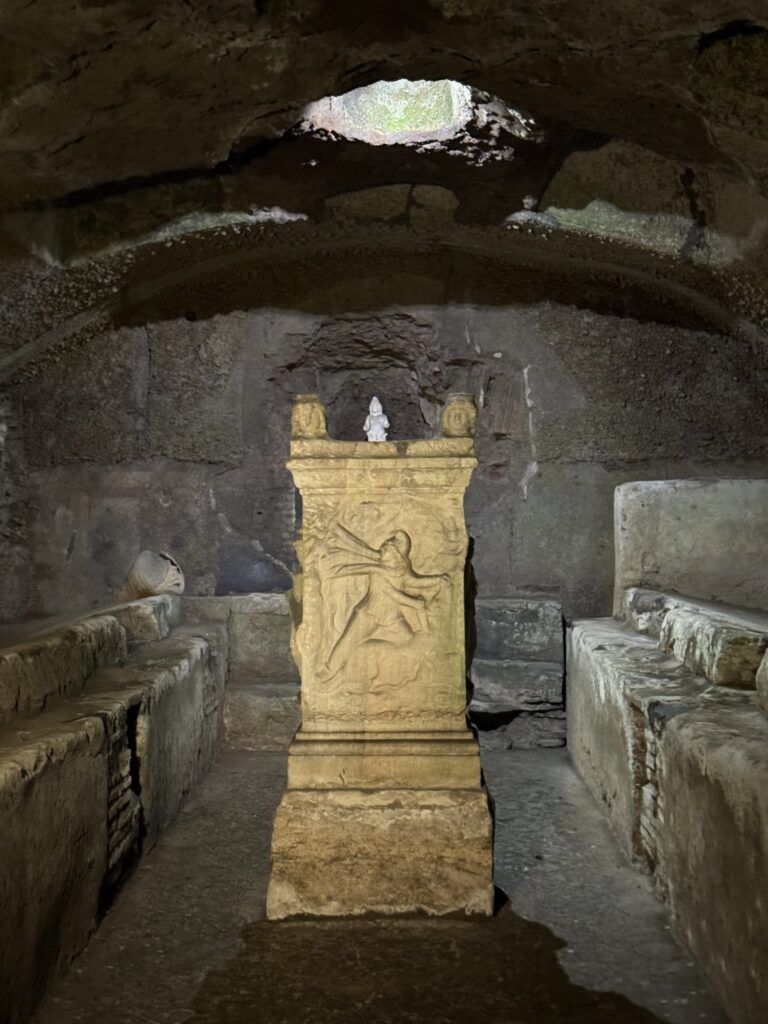
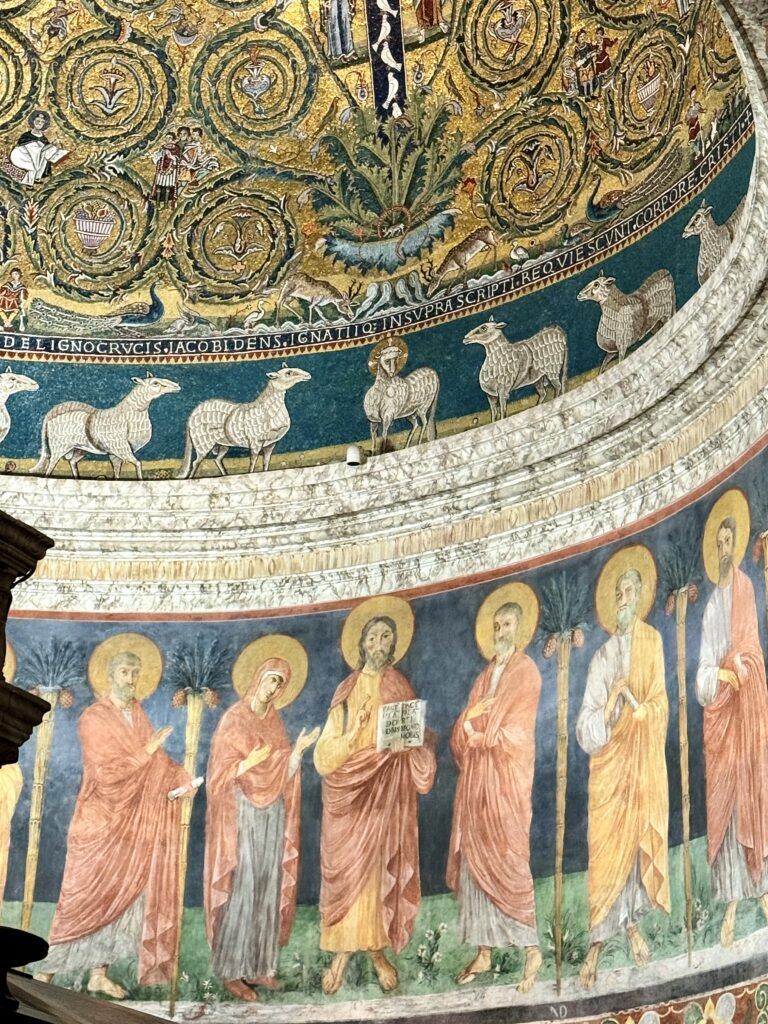
Basilica of San Clemente
Then, take a taxi or hike to the Basilica of San Clemente. This is one of the most fascinating churches in the city with layers of history. What you see today dates from the 12th century.
But, like so many other churches, it was given a Baroque face lift with a gaudy glided ceiling. Ignore this and focus on the church’s older treasures.
The apse is gorgeous, decorated with 13th century mosaics and a triumphal cross. A luxuriant tree of life sends out spirals of foliage. At the bottom, is a strong of 12 sheep.
But the real highlight is descending underground to the ruins of the 4th century church below. You’ll see a slew of faded frescos and the remains of a Mithraeum, a Roman temple decided to the mysterious cult of Mithras.
>>> Click here to book a tour of the church and its underground areas
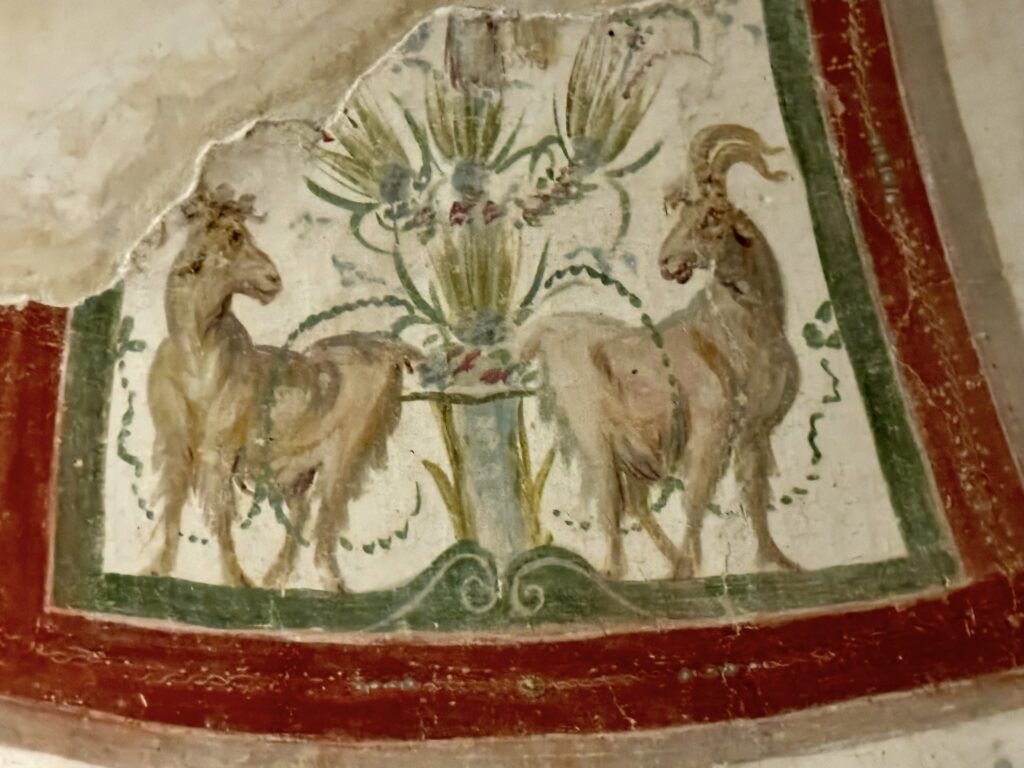
Case Romane del Cielo
Case Romane del Cielo is hidden gem on the Caelian Hill. On a visit, you go underground to inspect some almost 2,000 year old Roman homes. You’ll have the place largely to yourself!
There are about 20 rooms in the museum, distributed on different levels. The site consists of several Roman houses dating to the 2nd-4th centuries AD.
Some of the rooms have ancient frescos, mosaics, and feature remains of ancient heating systems. There is explanatory language in English.
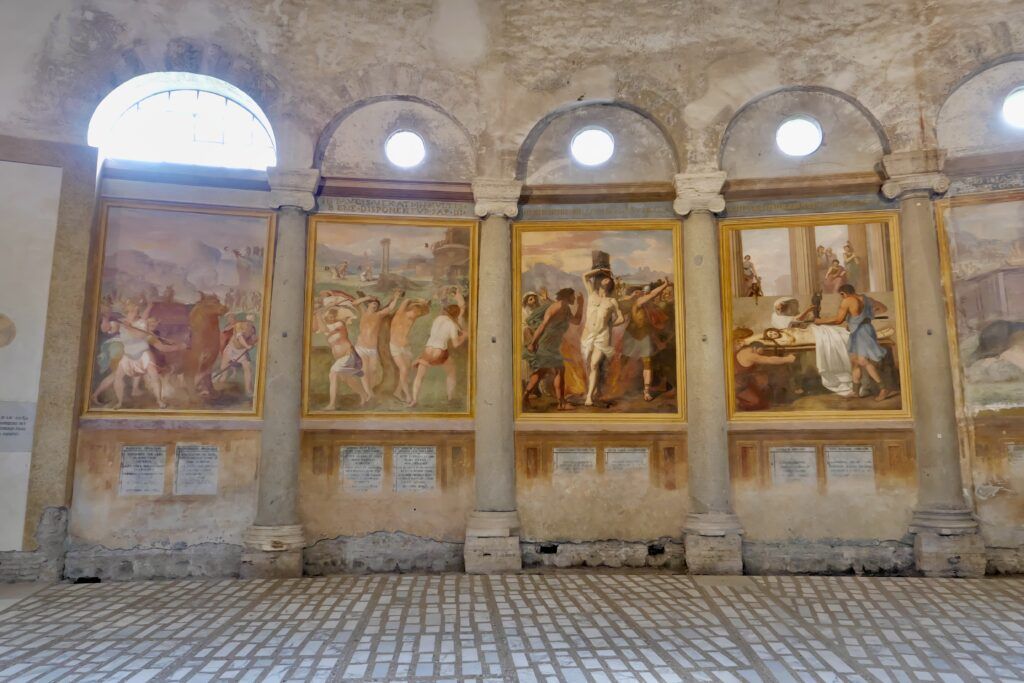
Santo Stefano Rotondo
Santo Stefano is a picturesque church that’s the oldest circular church in Rome.
Dating from the 5th century, the church is dedicated to St. Stephen, the first Christian martyr.
Inside, there are 34 marble columns embedded in frescoed walls. Sunlight streams through the beautiful clerestory windows.
Basilica of St. John Lateran
After St. Peter’s, San Giovanni in Laterno is the most important Roman Catholic Church in the world.
It’s part of a complex of some of Christianity’s most important monuments — the Scala Santa, the Sancta Sanctorum, the Palazzo Laterno, and the Baptistery.
The church was founded by Emperor Constantine in the 4th century. The travertine facade is crowned with 15 statues. Five doors lead into a barrel vaulted portico and a wide central nave.
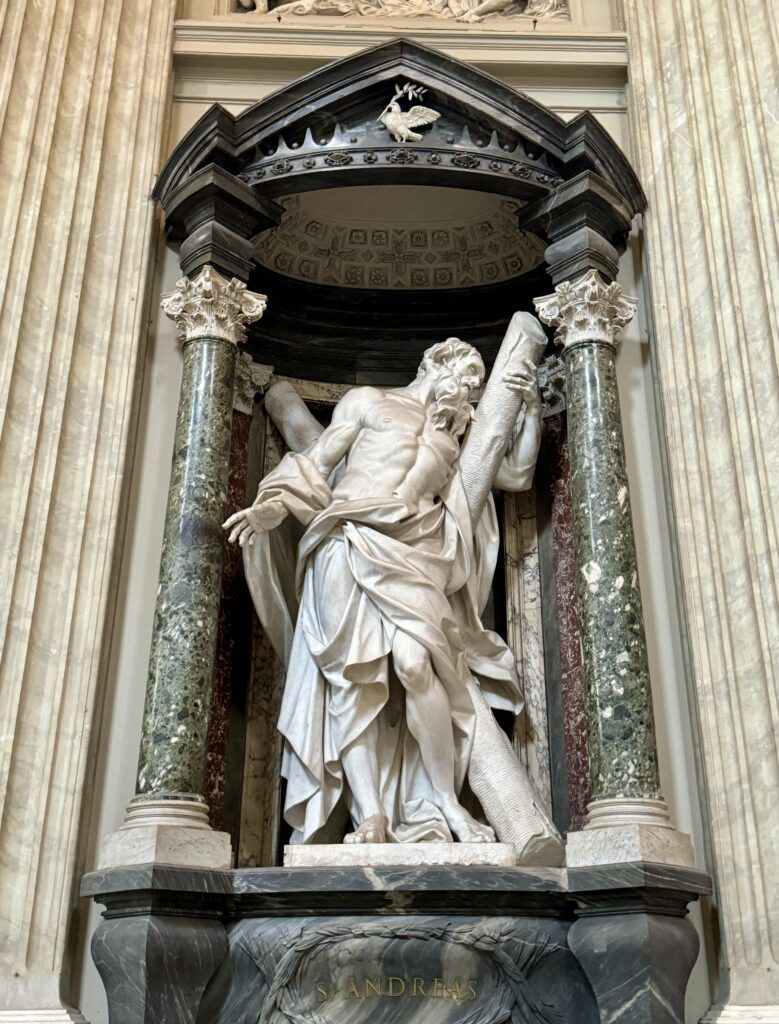
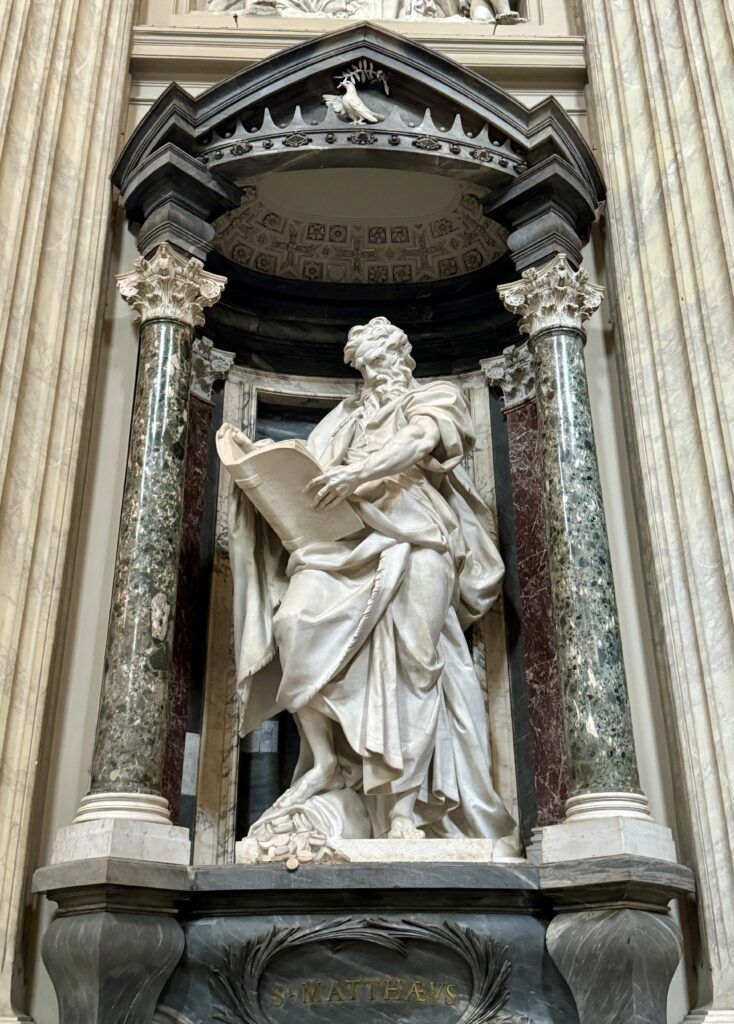
You will feel it’s monumental magnificent. This came courtesy of the architect Borromini. He created 12 niches flanking the central nave that’s a parade of giant Baroque statues.
A door in the left hand wall leads to the cloister, which is a mini museum itself.
A few hundred feet away, in back of the church, is the Baptistery in a brown brick building. It retains its original octagonal shape from the 4th century.
17th century frescos depict the life of Constantine. There are some beautiful 5th through 12th century mosaics.
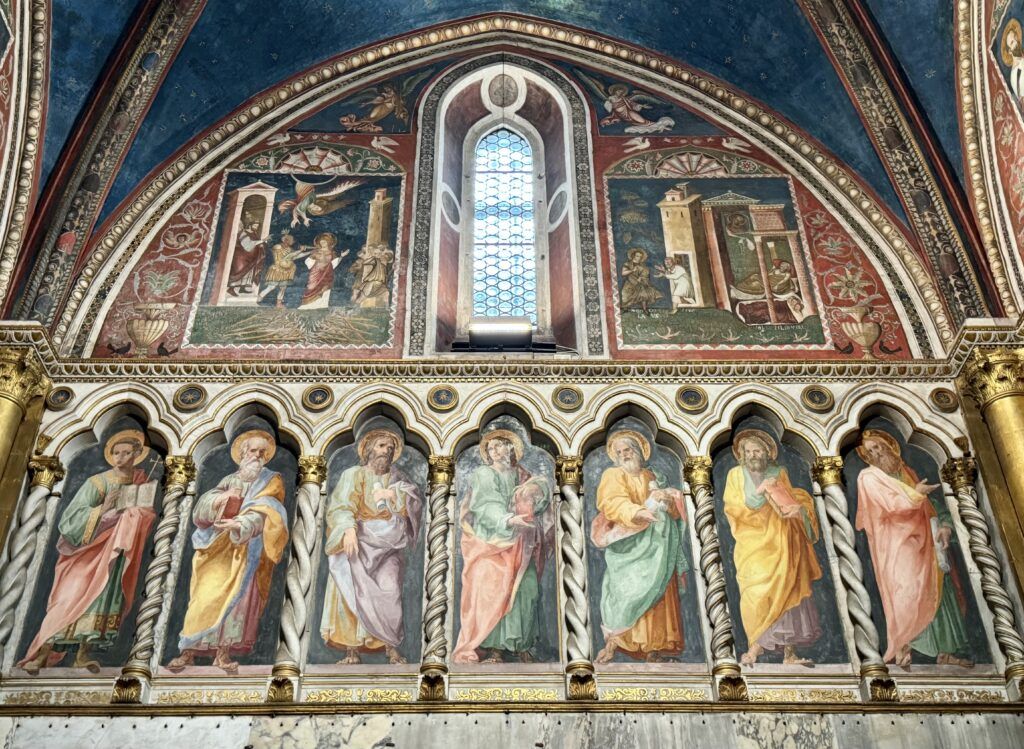
Holy Stairs & Sancta Sanctorum
Across the street you can climb up the Holy Stairs, the Scala Santa. It’s a ceremonial marble staircase believed to be the one Jesus ascended by in Pontius Pilate’s Jerusalem palace.
The highly religious climb up the central staircase on their knees. A lateral staircase allows you to walk up, admiring the frescoed ceilings as you go.
The stairs lead to the Santa Sanctorum. This was the private chapel of the early popes. In the Middle Ages, it was the holiest site on earth.
The gorgeous restored frescoes date back to the 13th century. They’re attributed to artists from the school of Cimabue and the Roman school.
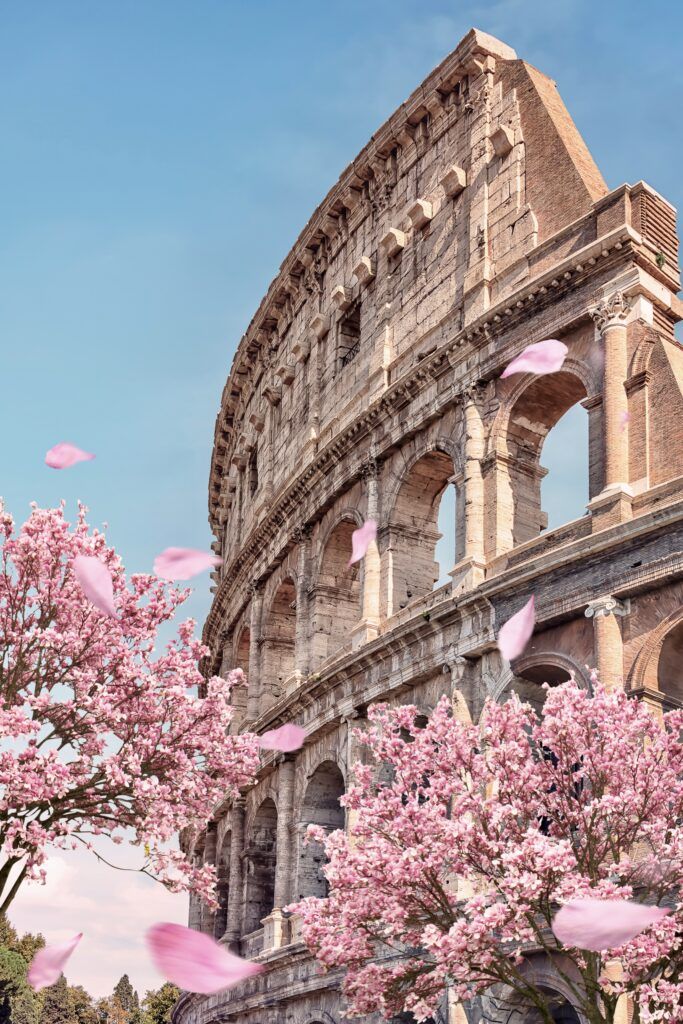
And that’s a wrap for my 4 days in Rome itinerary. You may find these other Rome travel guides useful:
- 8 Ways To Spend 1 days in Rome
- 2 Days in Rome Itinerary
- 5 Days in Rome Itinerary
- Hidden Gems in Rome
- Best Day Trips From Rome
- Rome’s Palace Museums
- Bernini Guide to Rome
- Caravaggio Guide to Rome
- Guide to the Best Museums in Rome
- Must See Archaeological Sites & Ruins
If you want to spend 4 days in Rome, pin it for later.

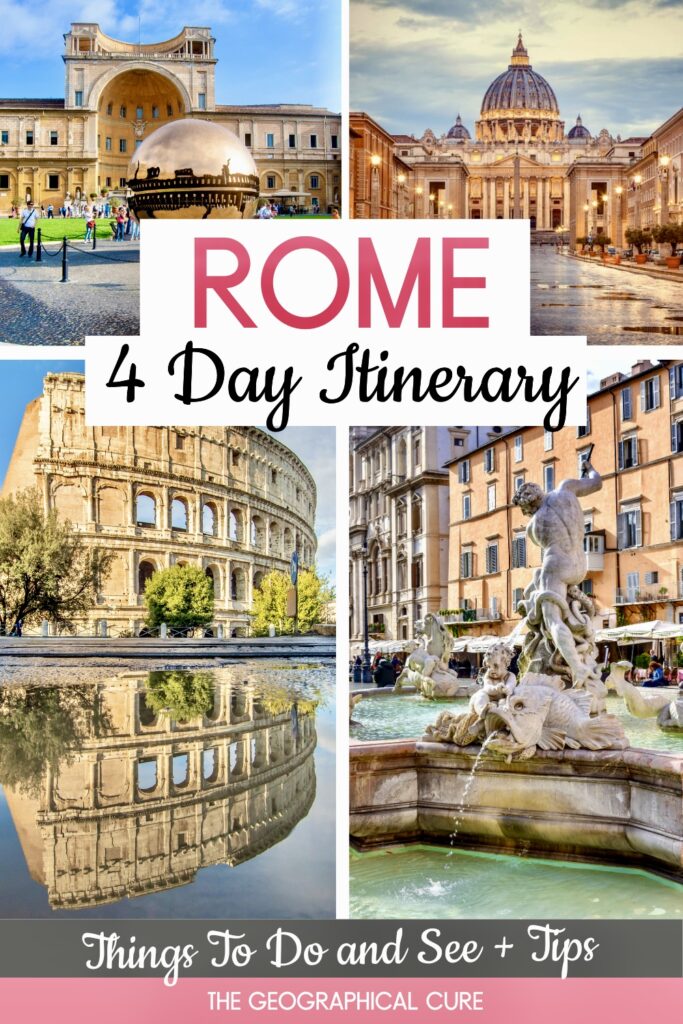
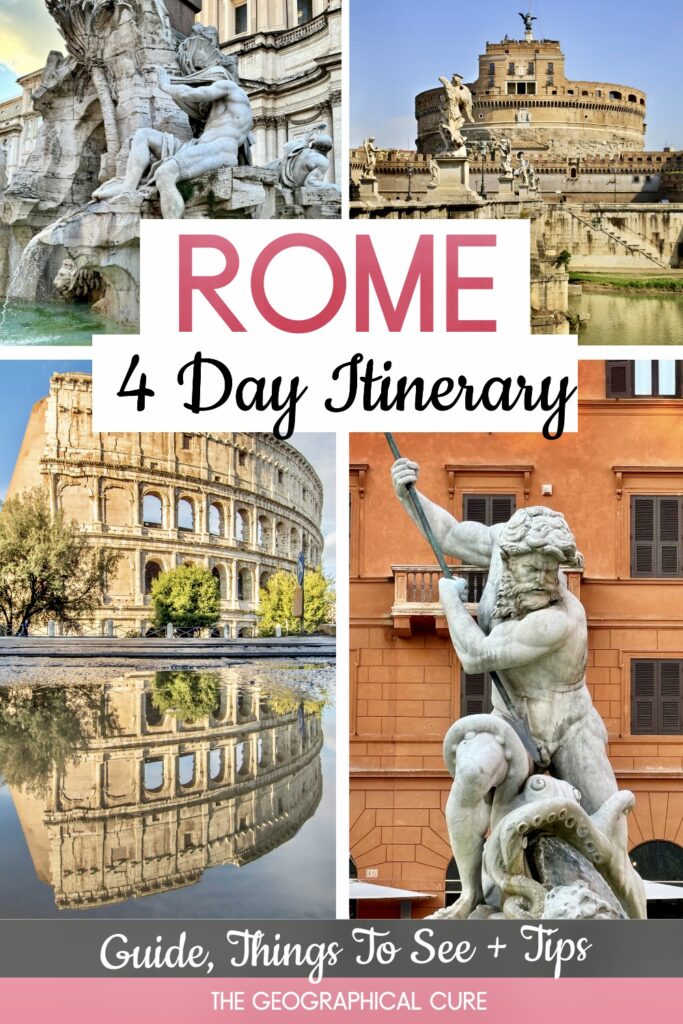
OMG this is PERFECT! I will consider the Romas Pass that includes transport vs the turbopass. Thanks for wrapping it in a bow so tidy! I will follow this this April Rome trip, so grateful I found you!
Thank you Lan! Have a fantastic visit in April!